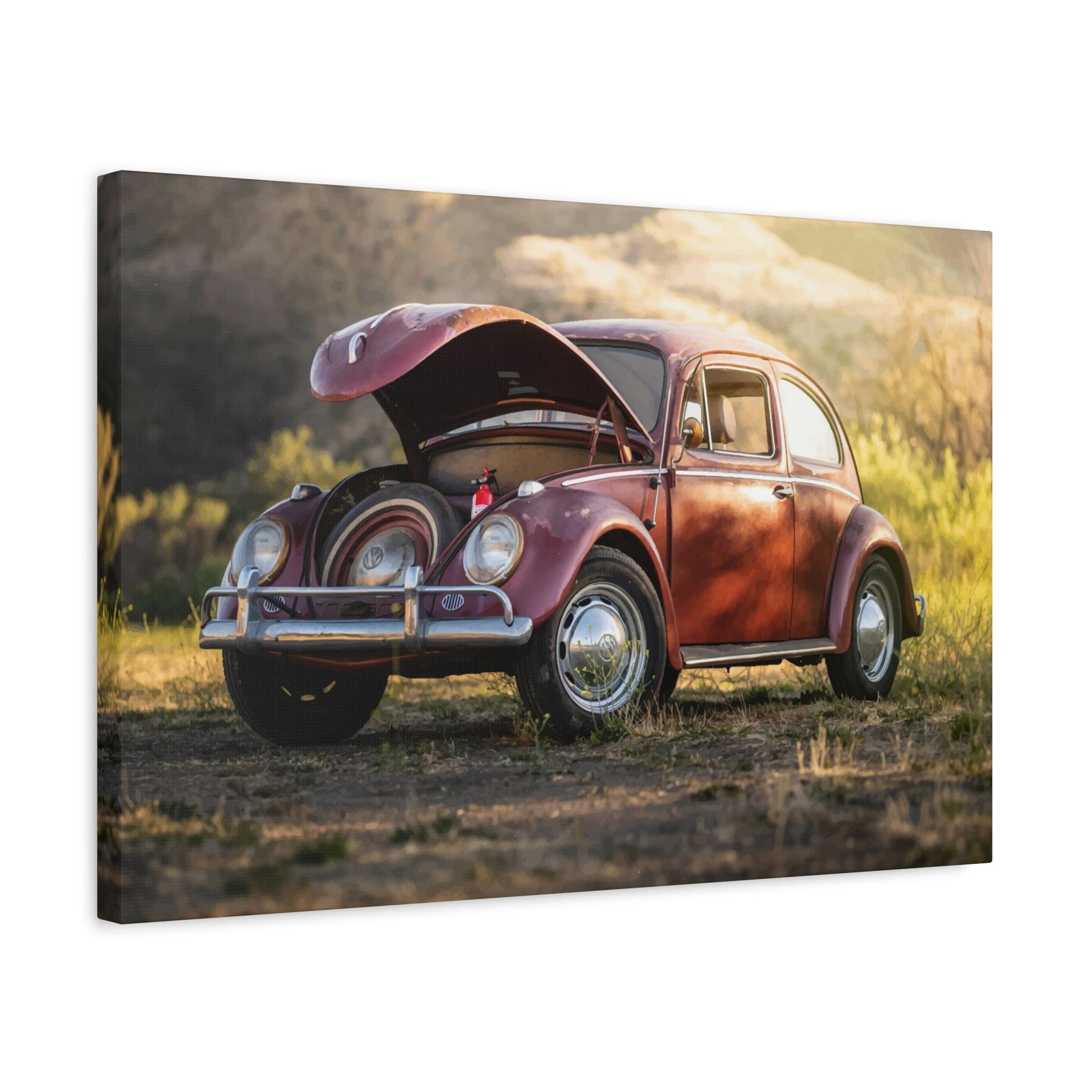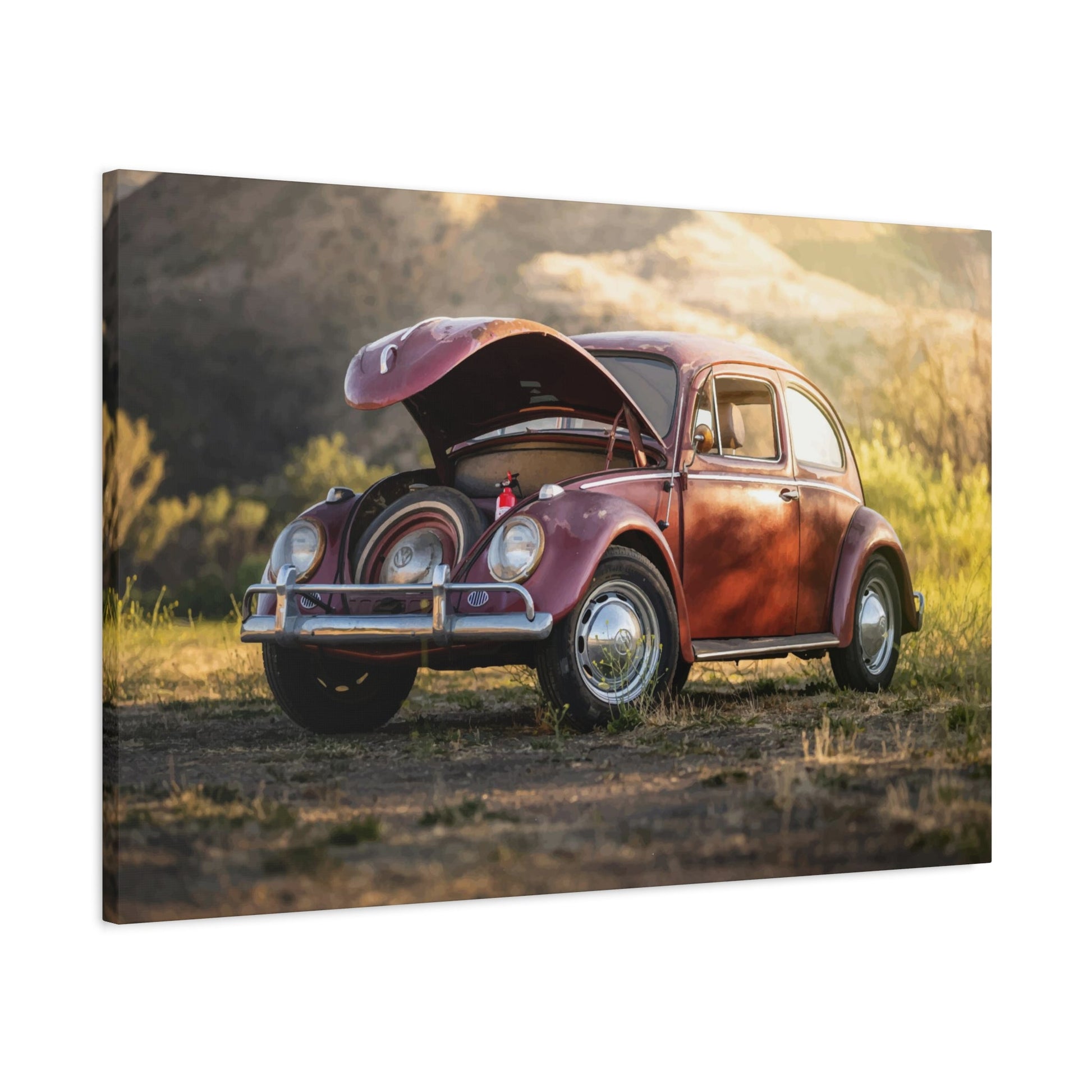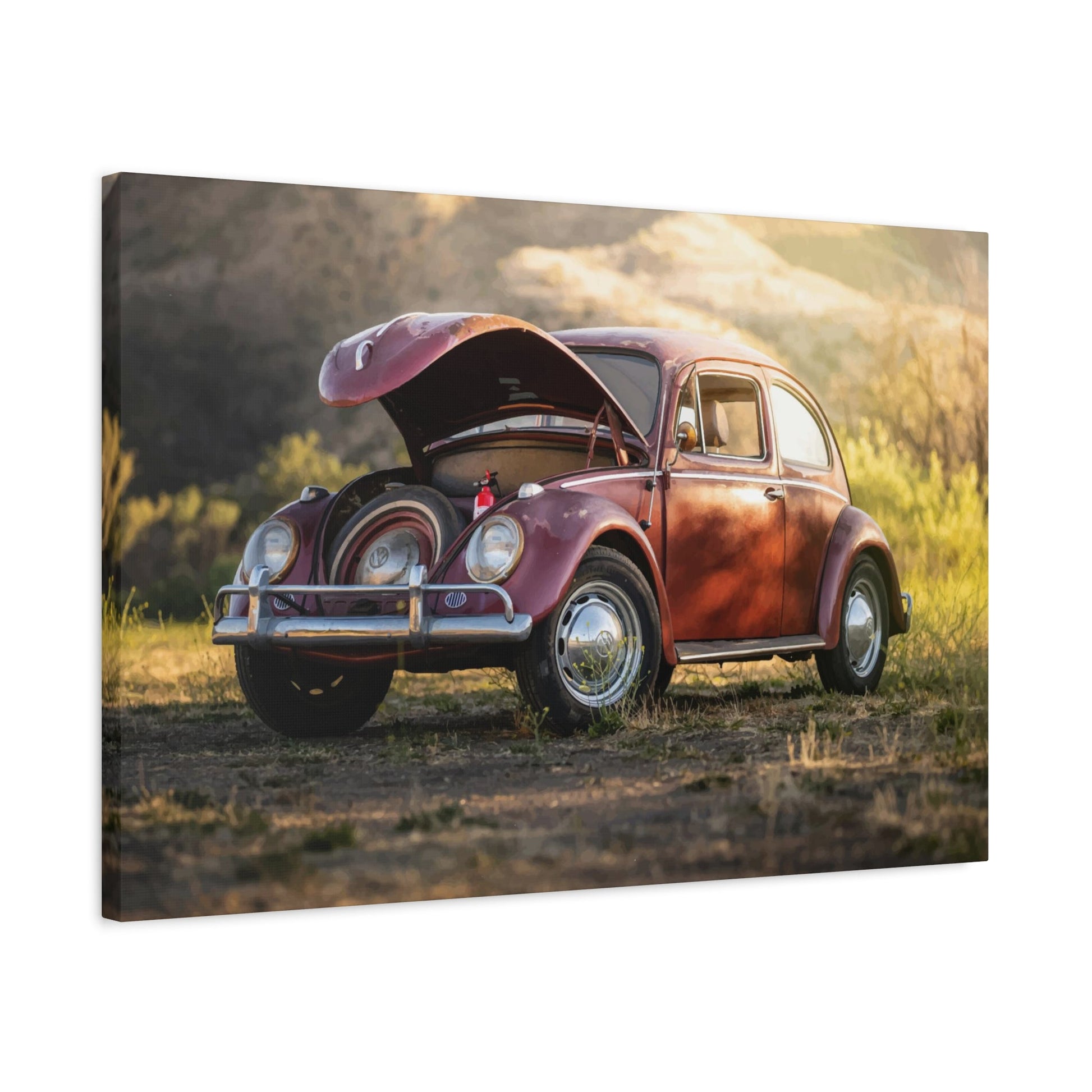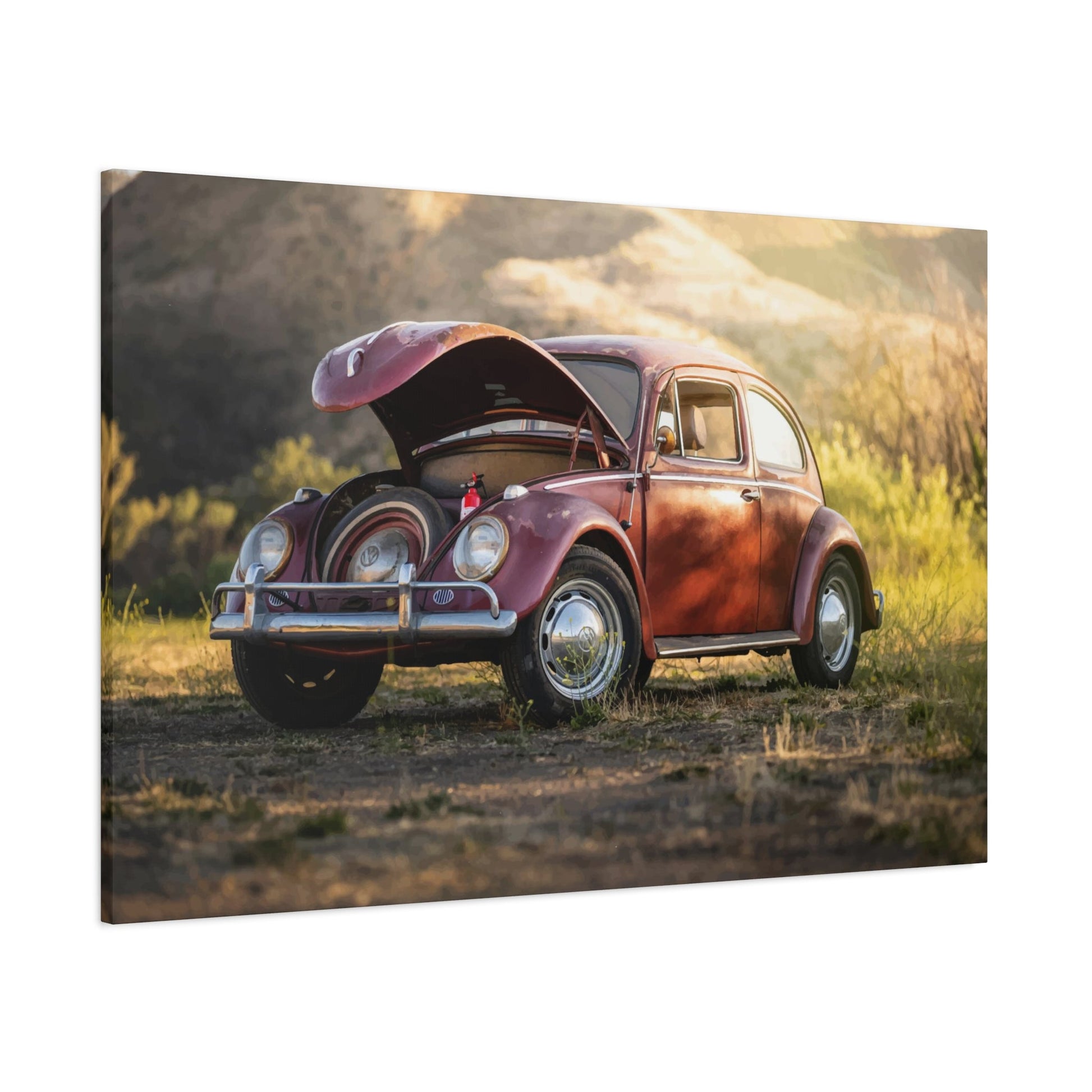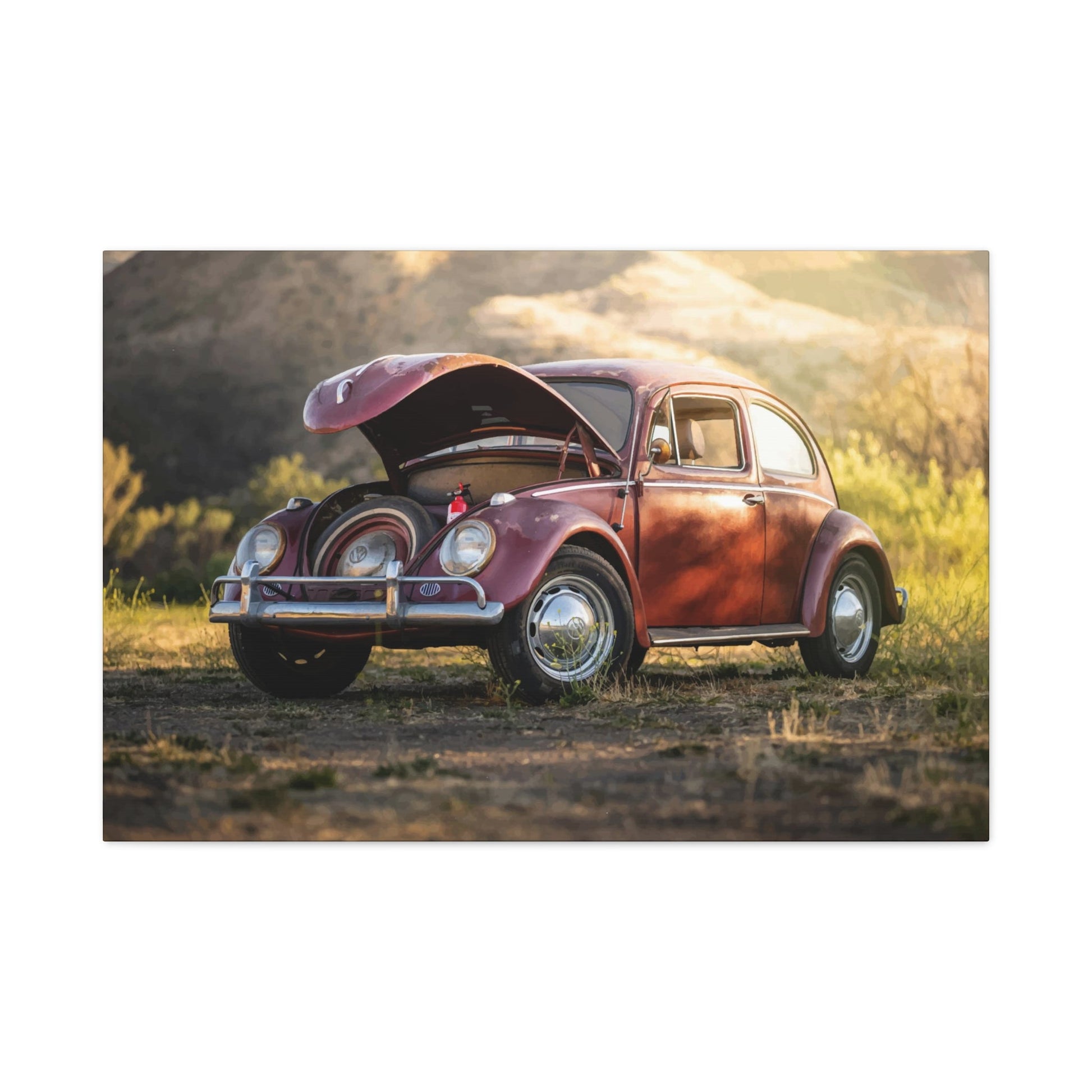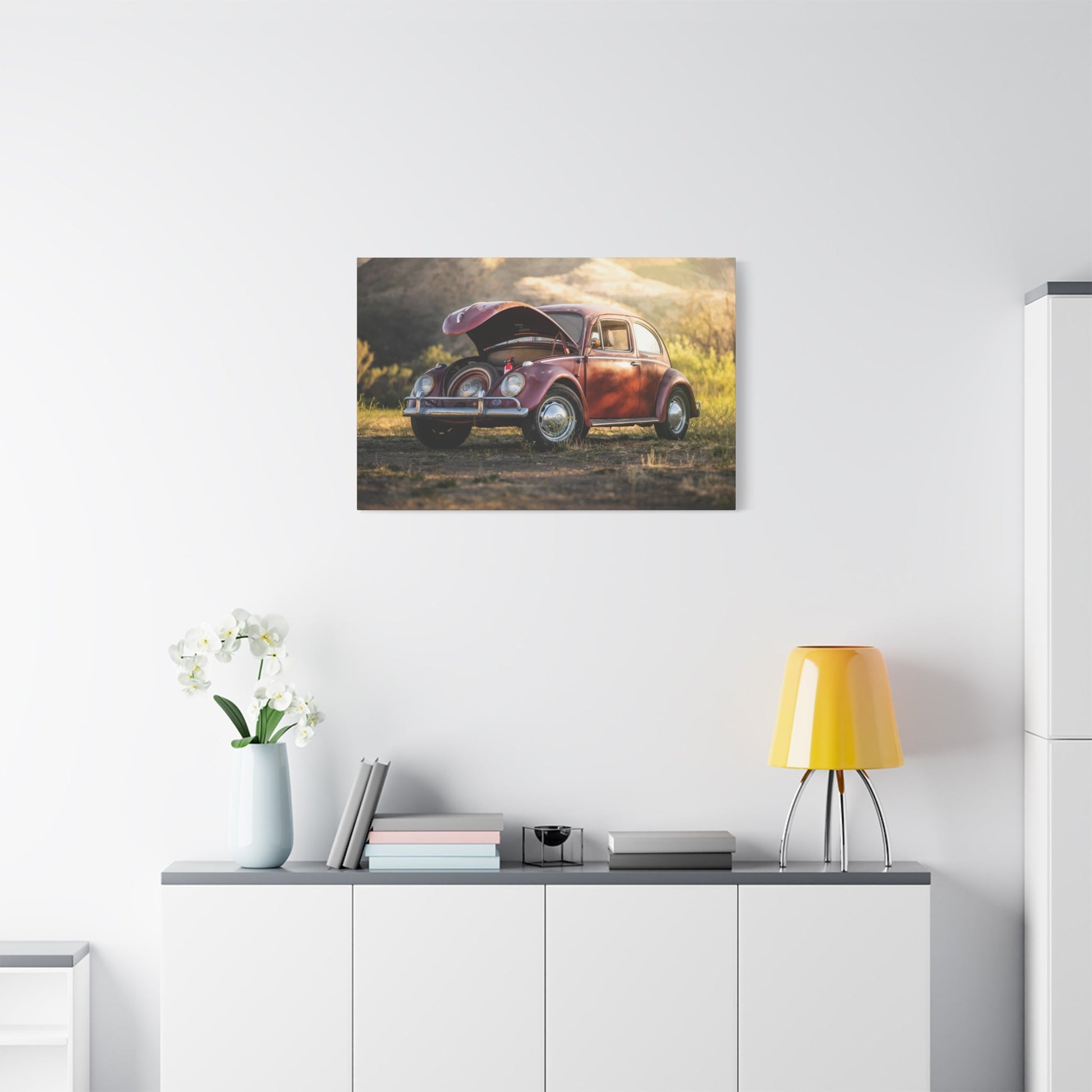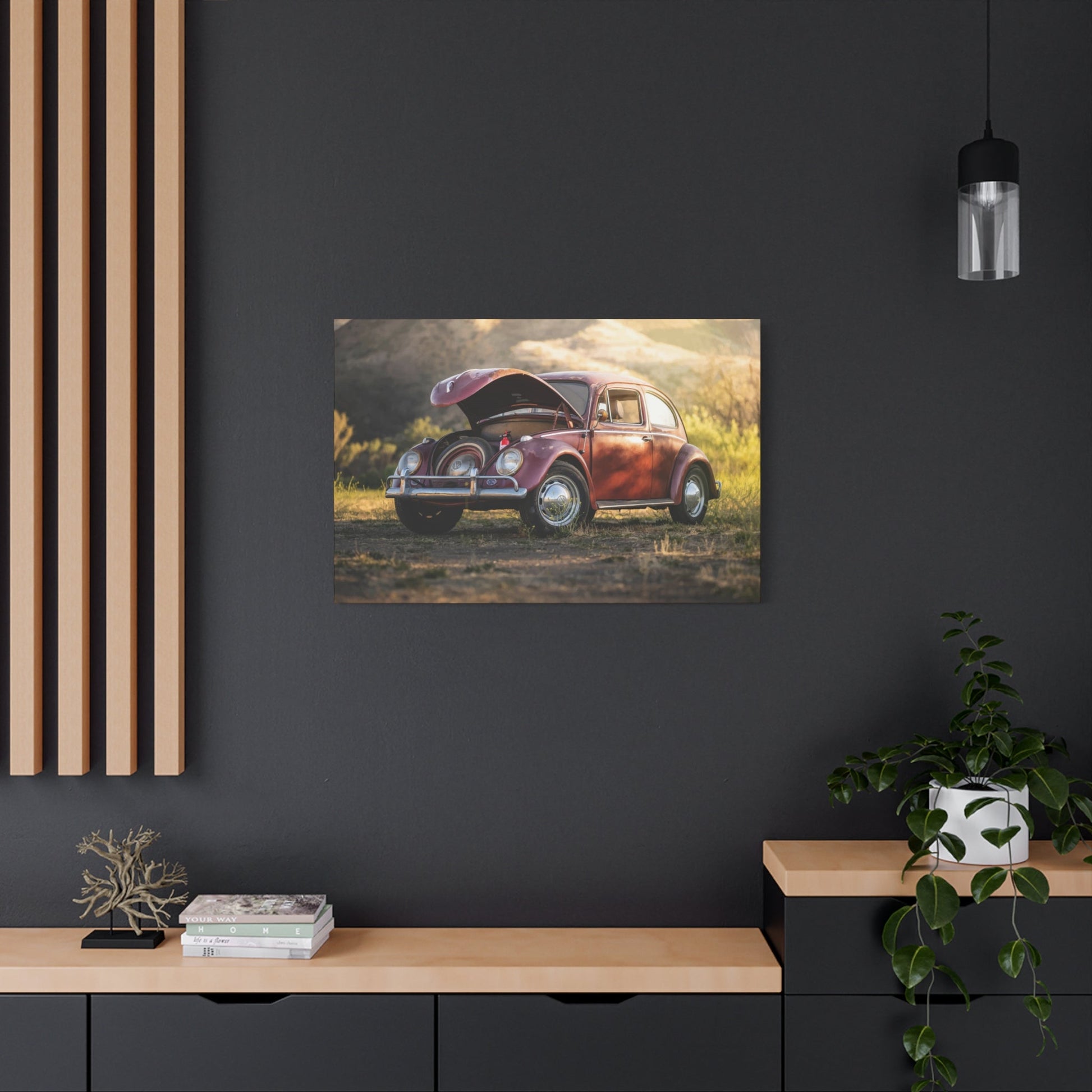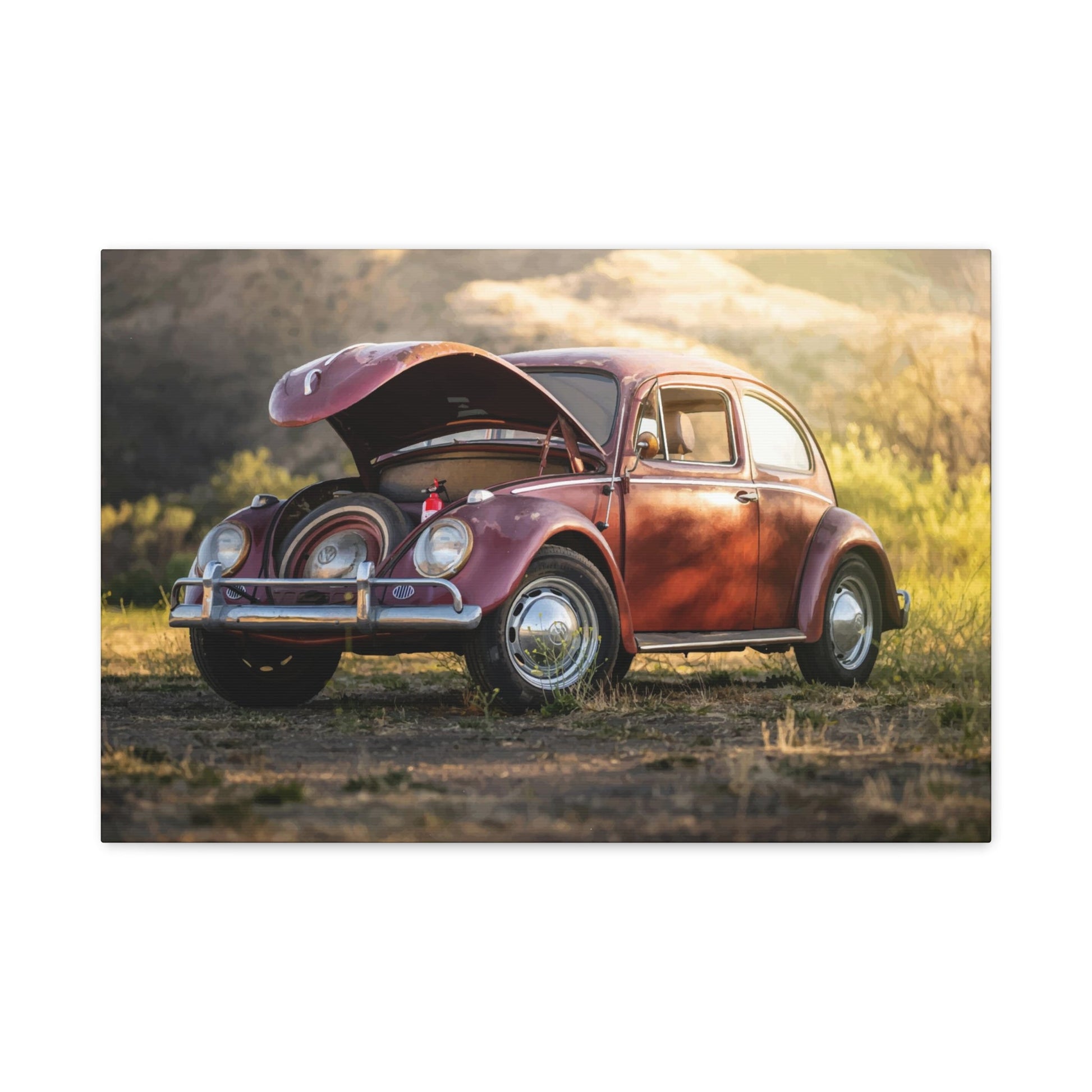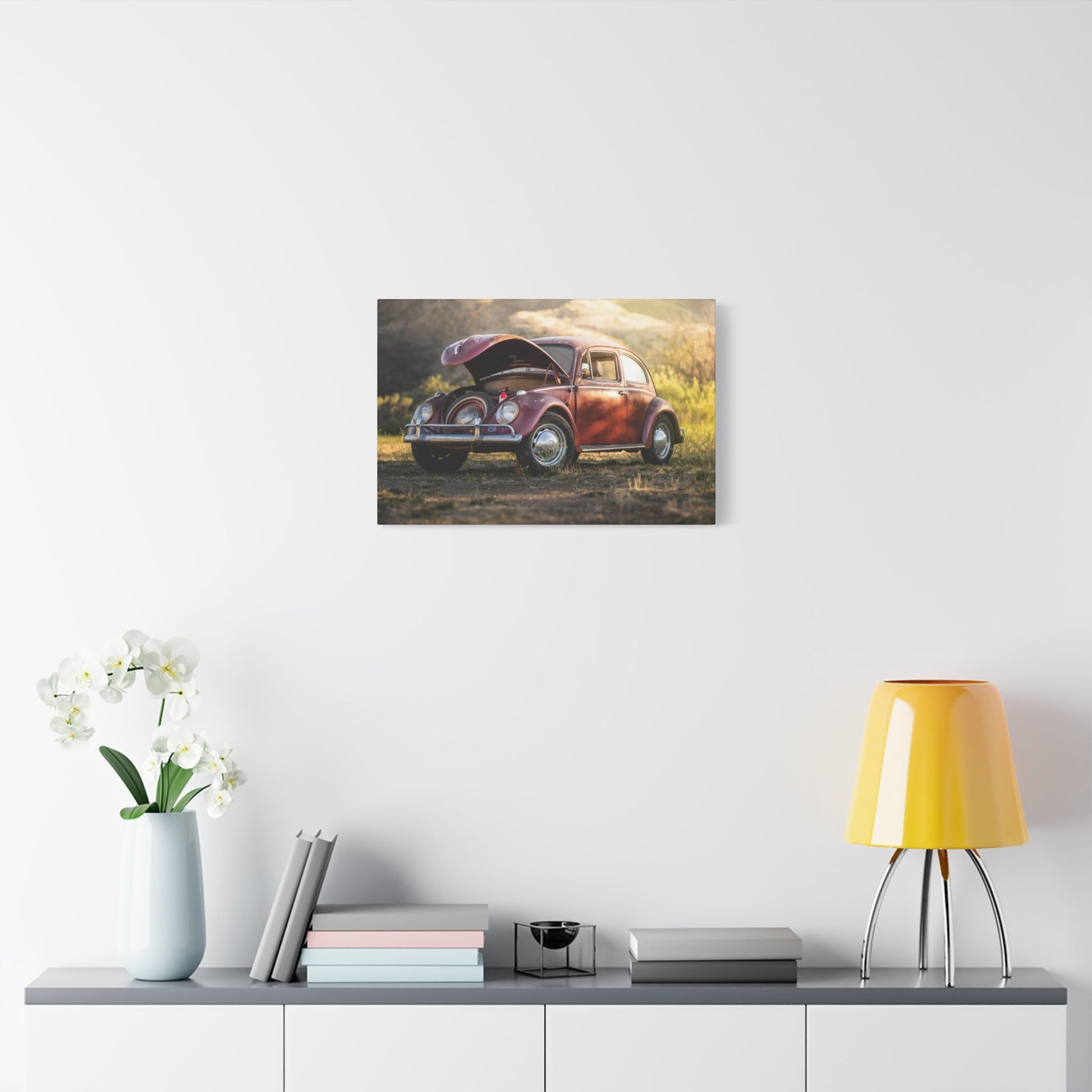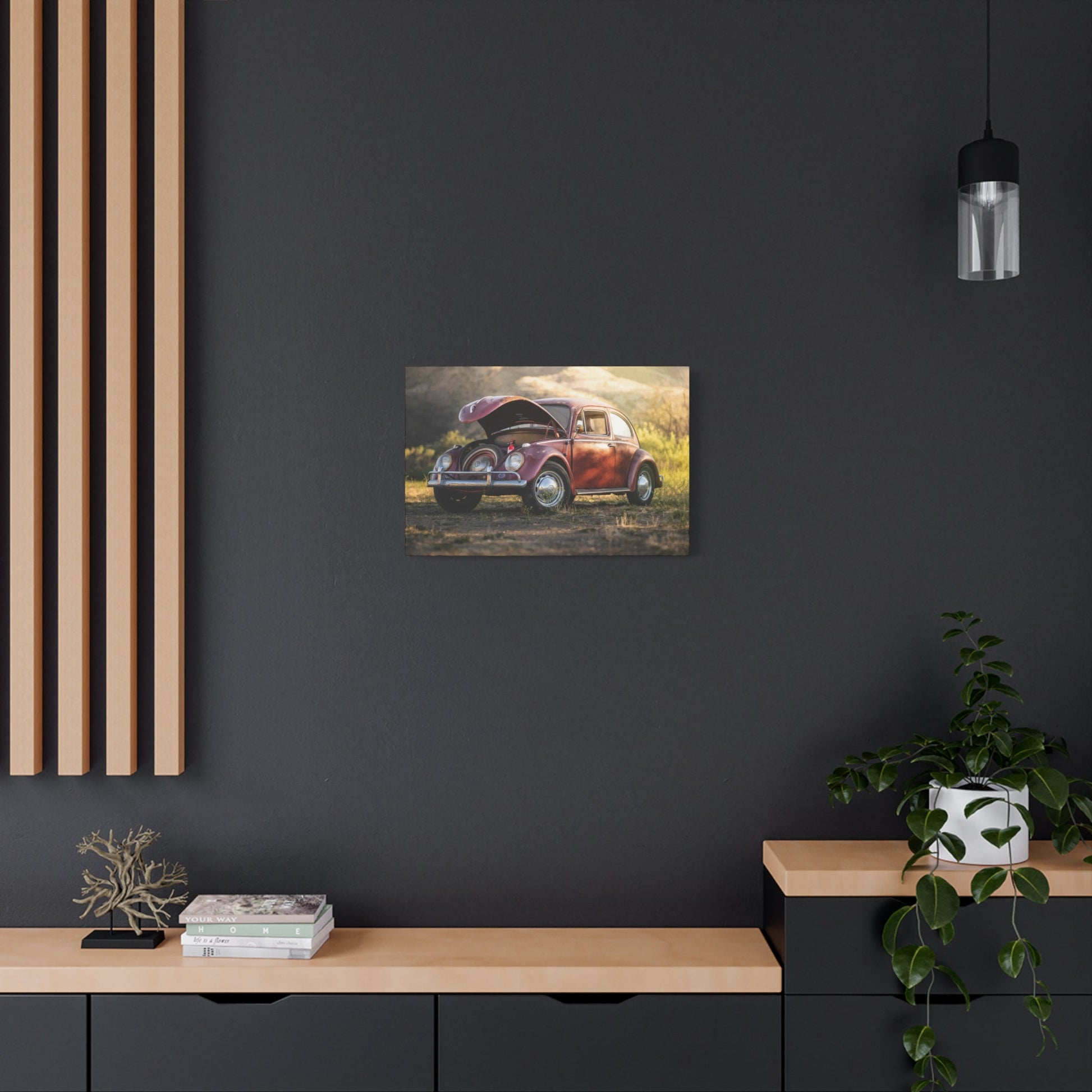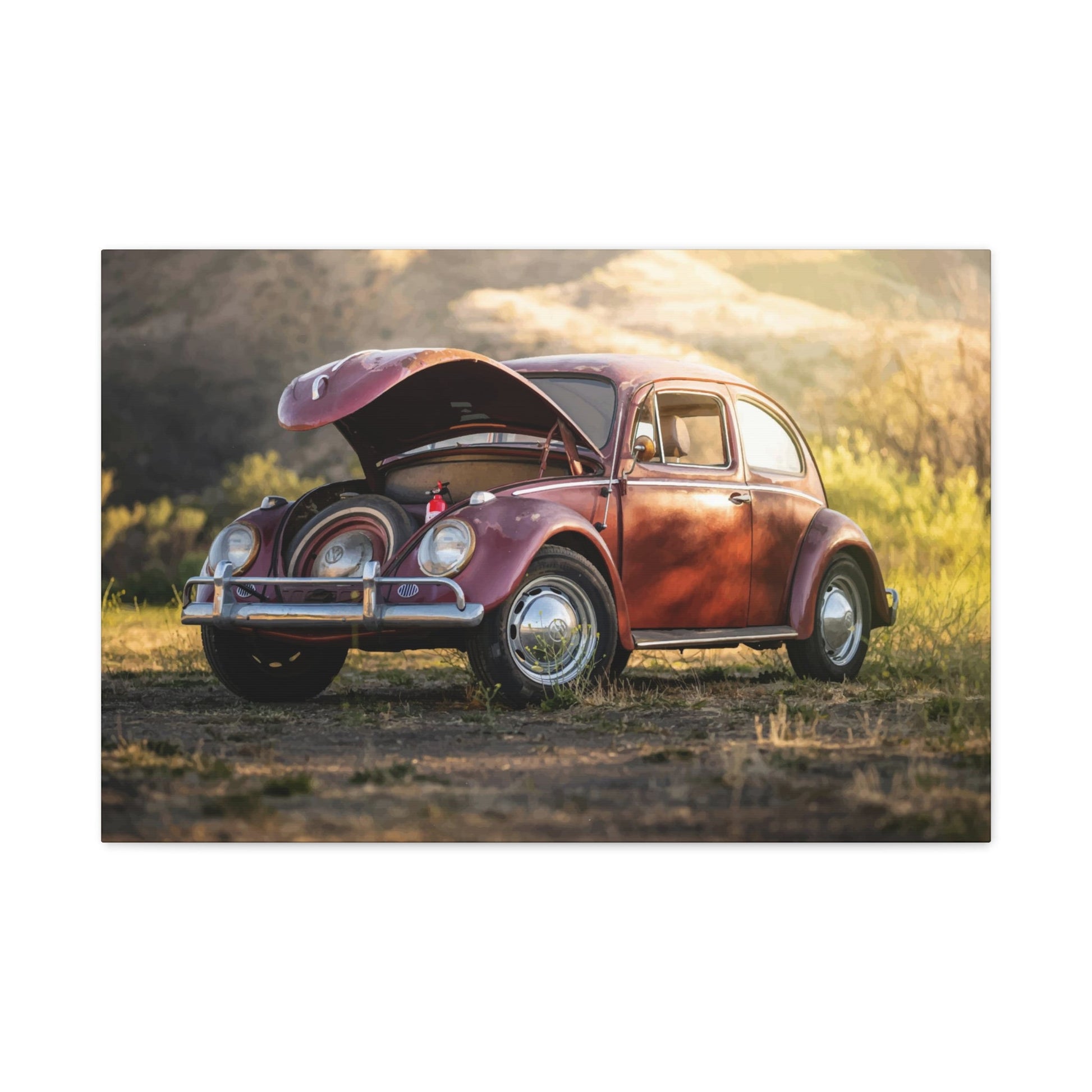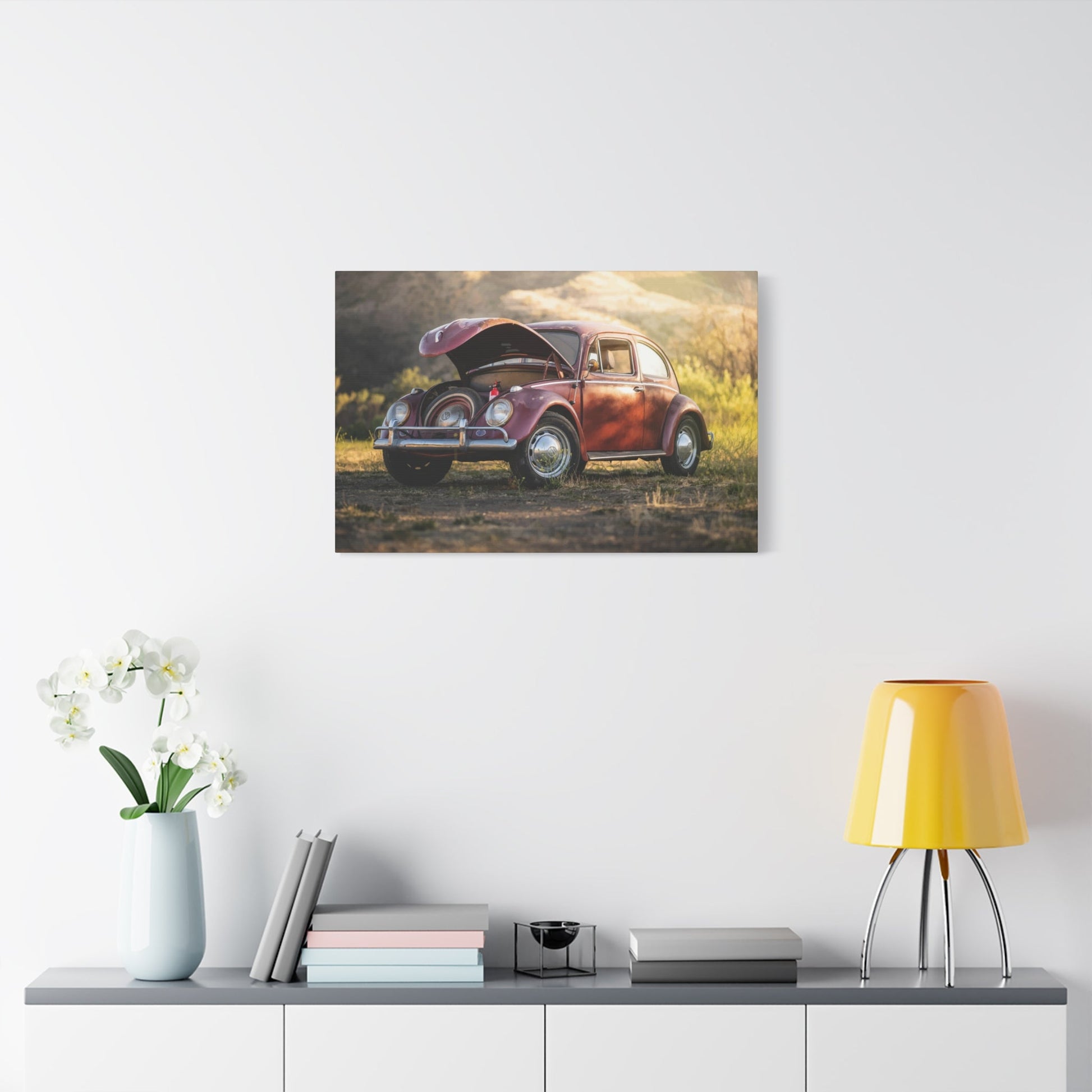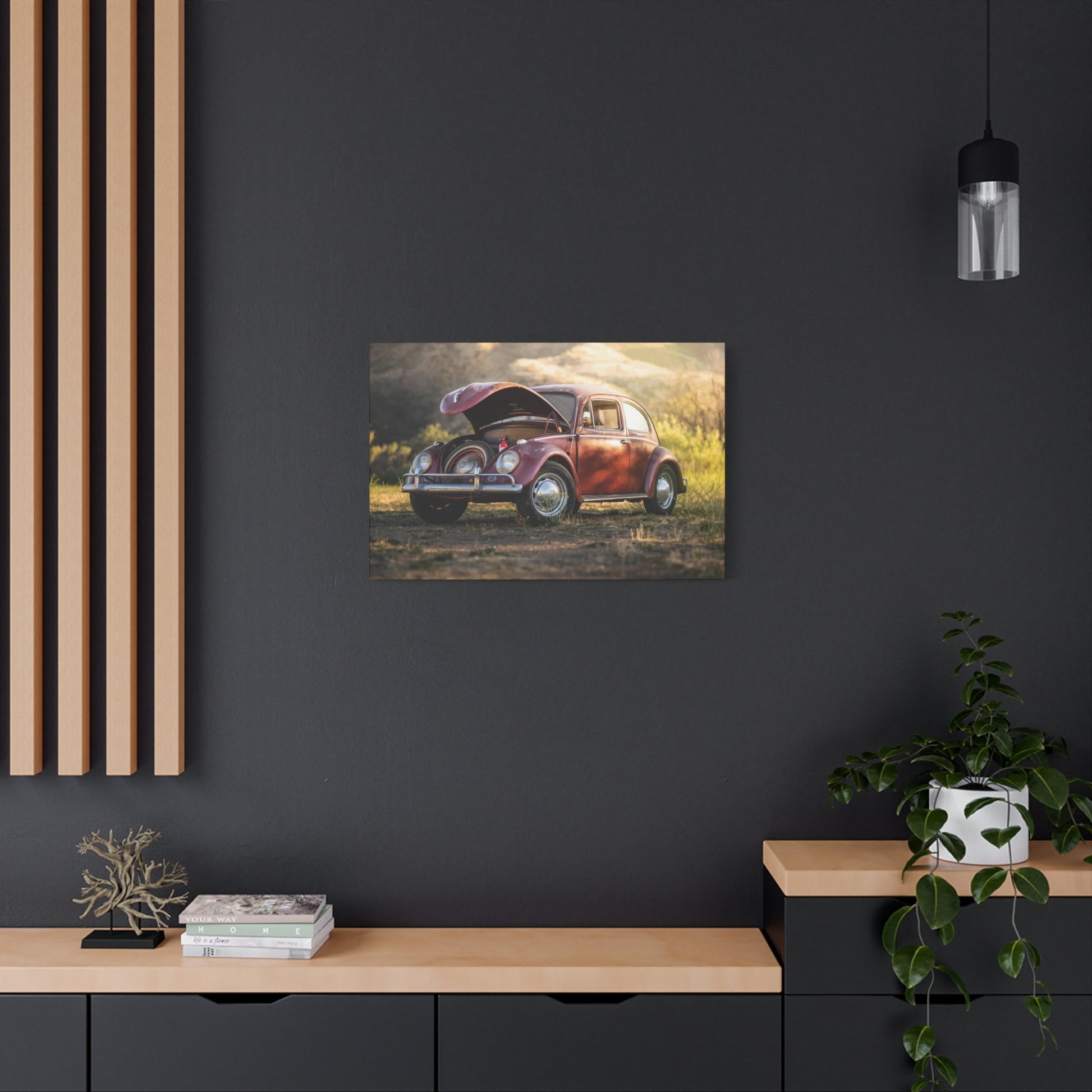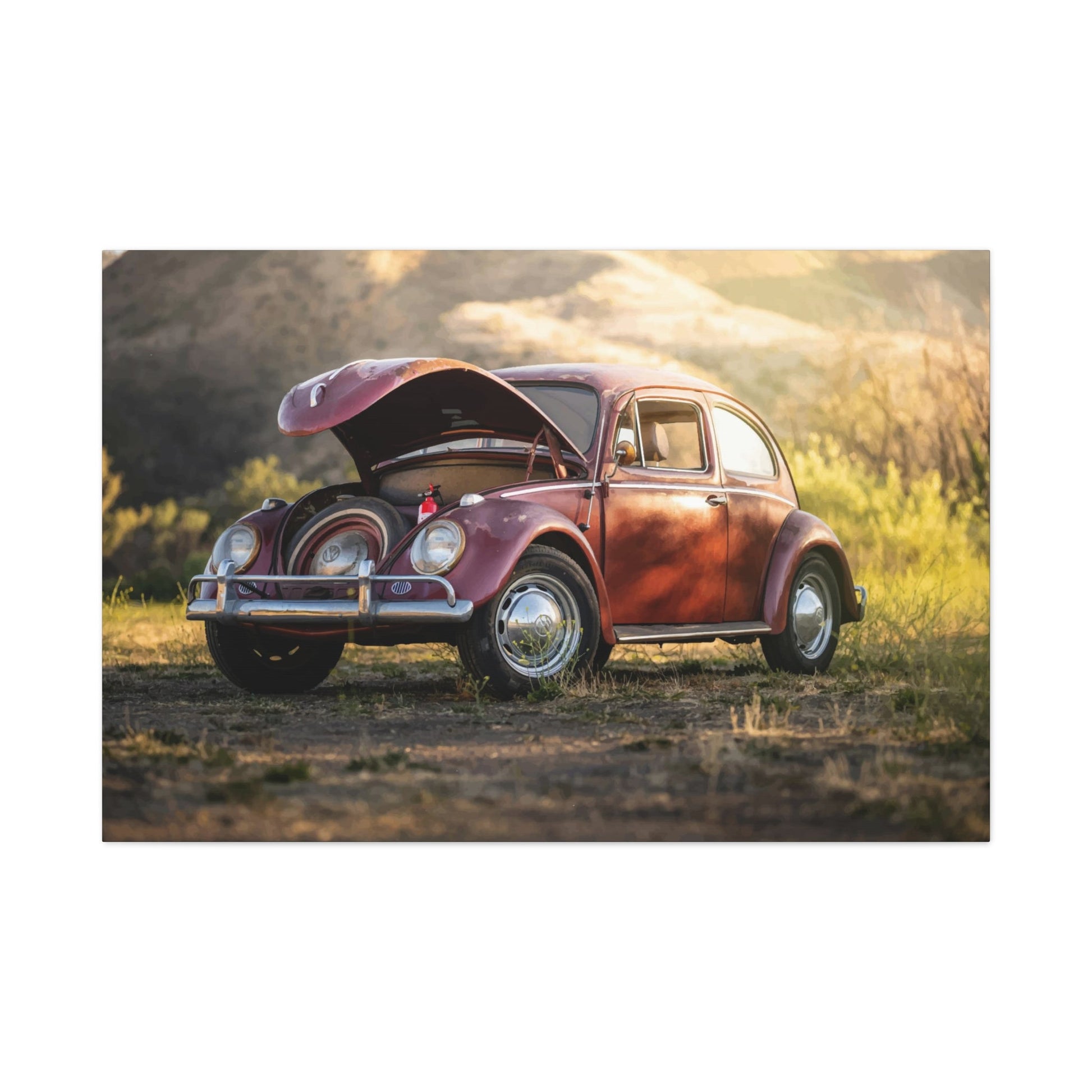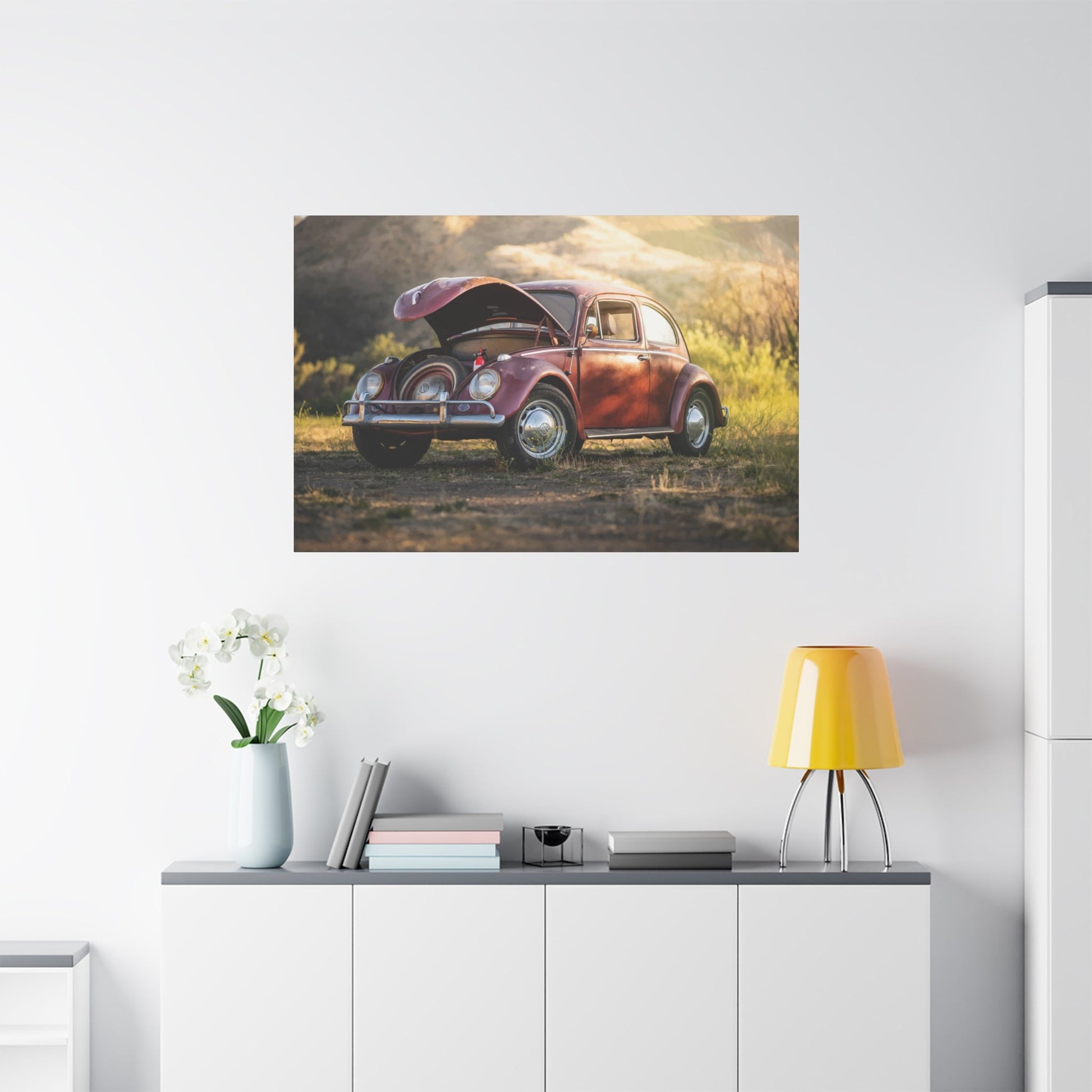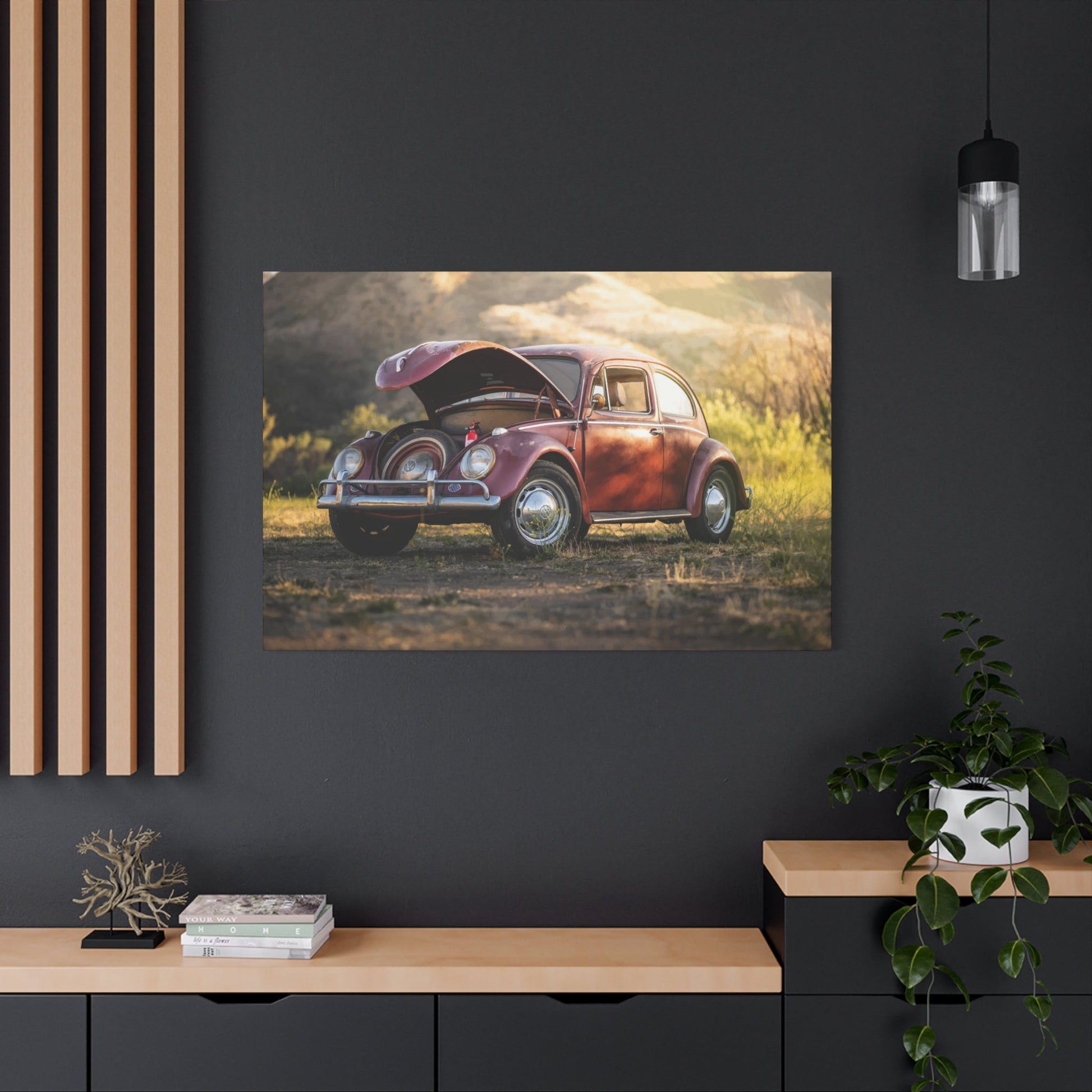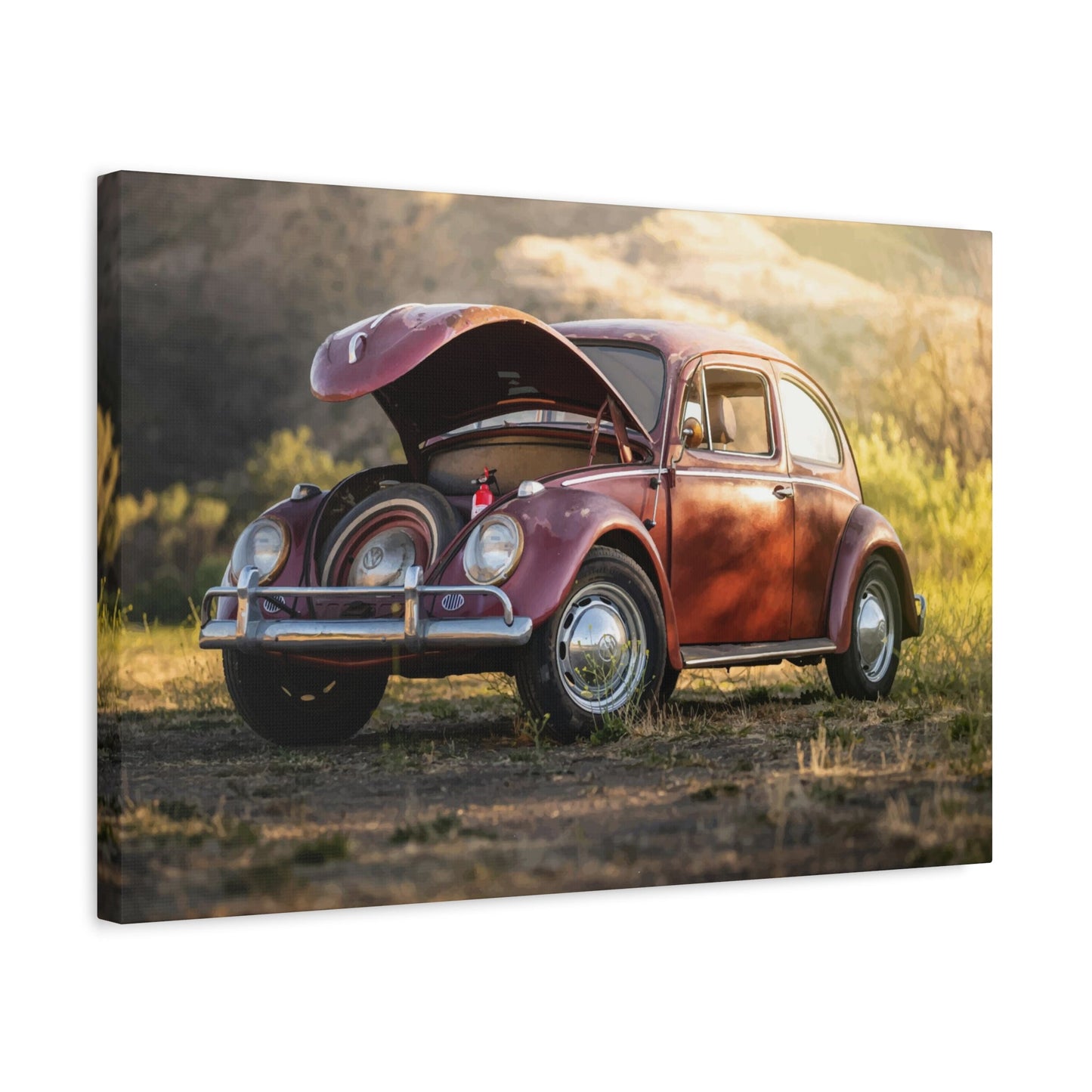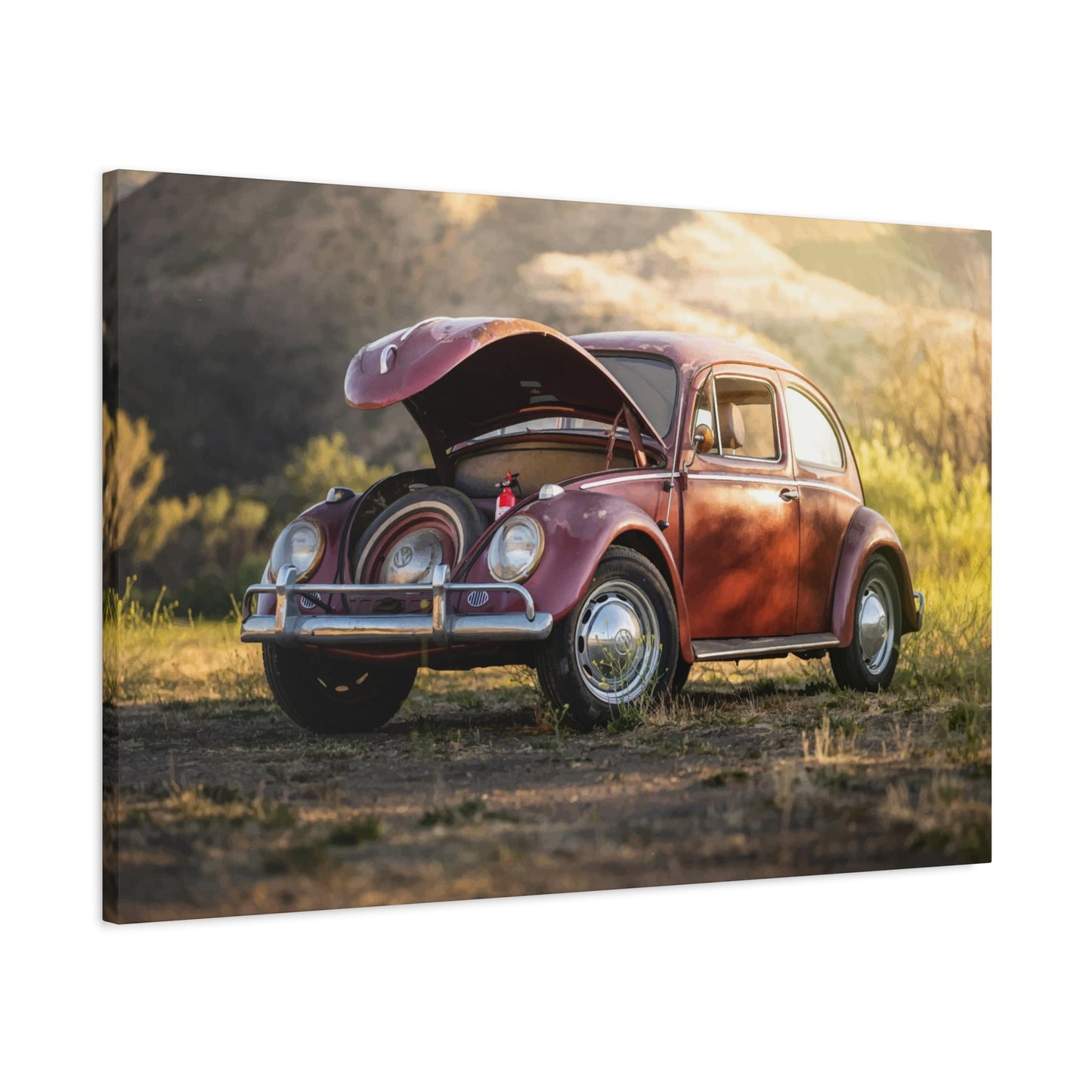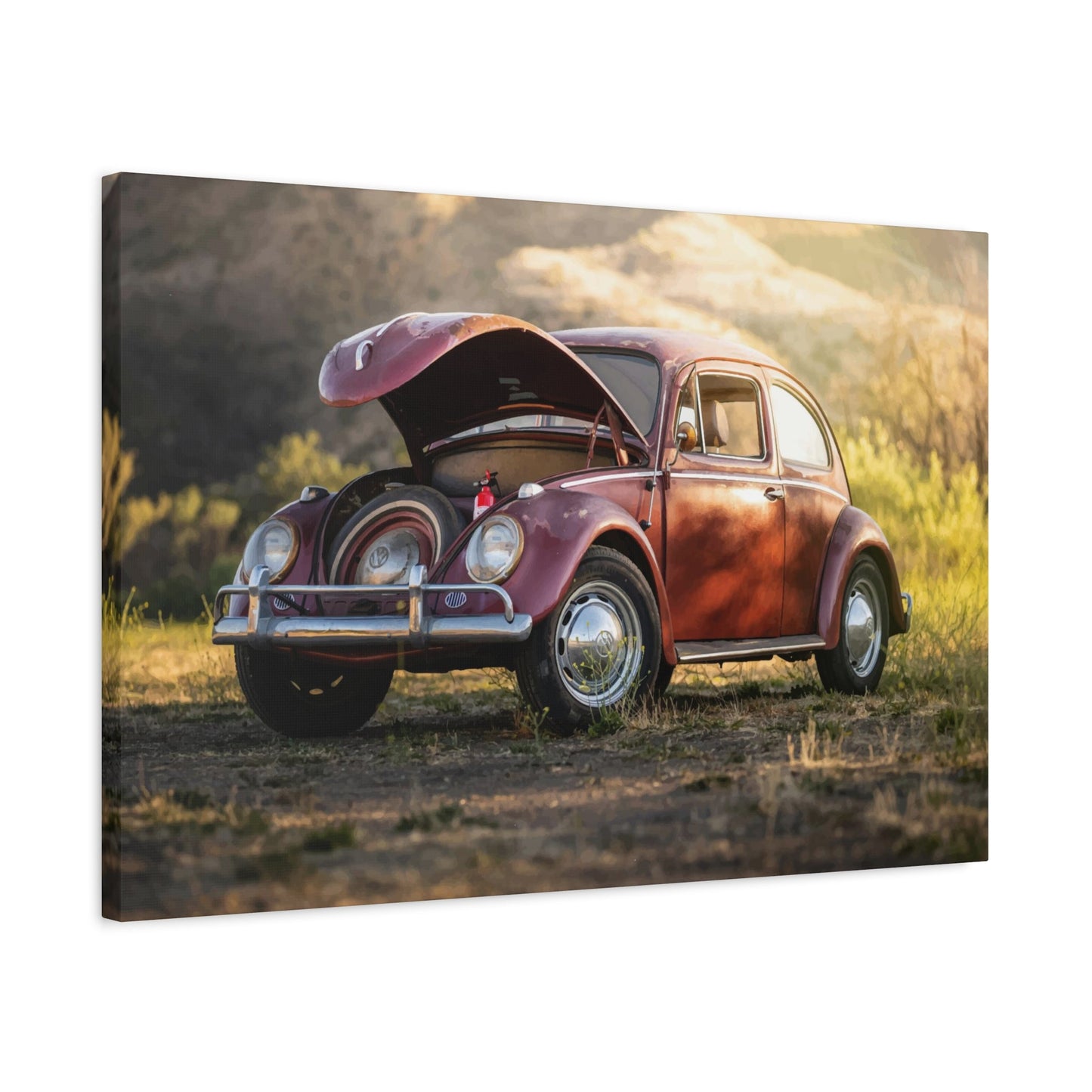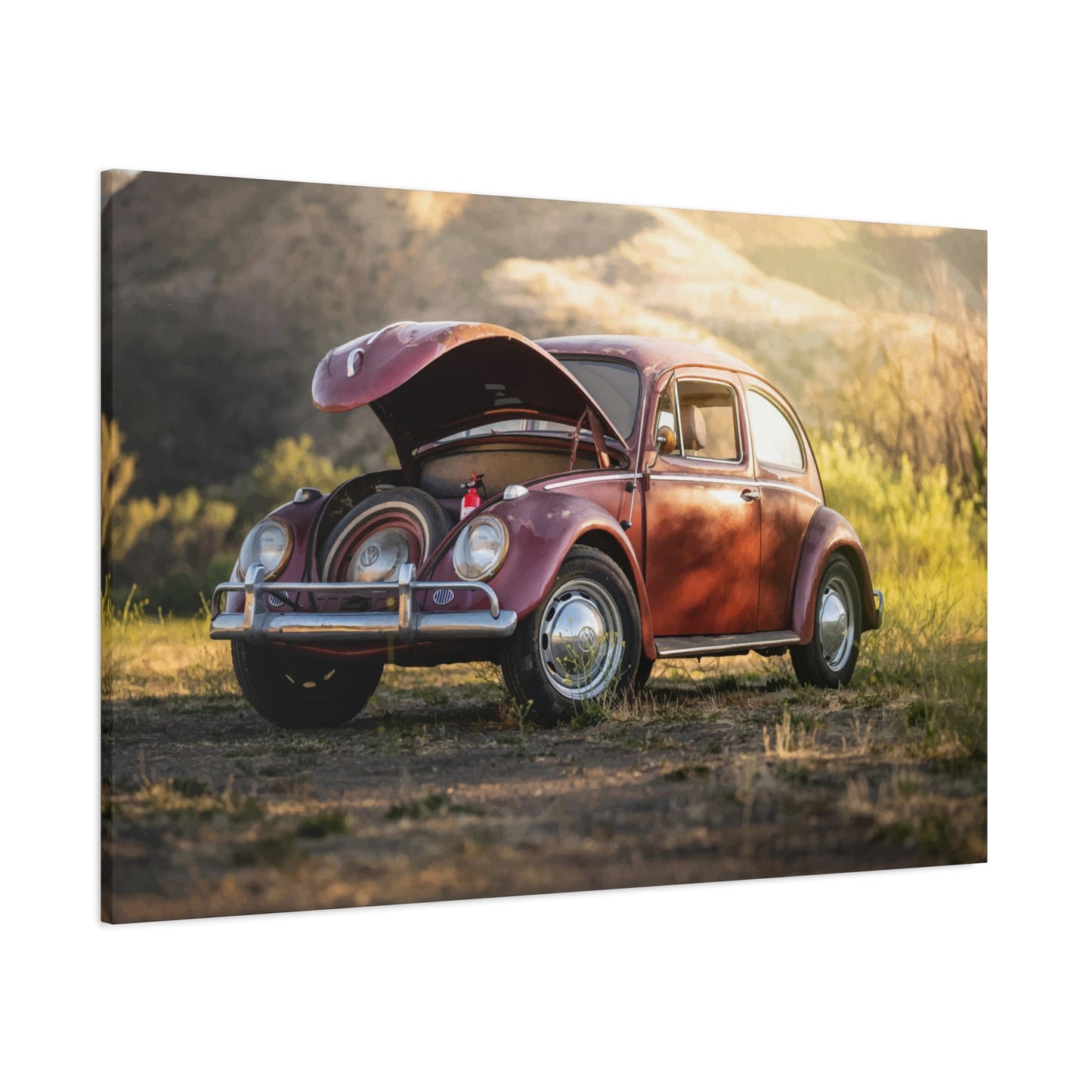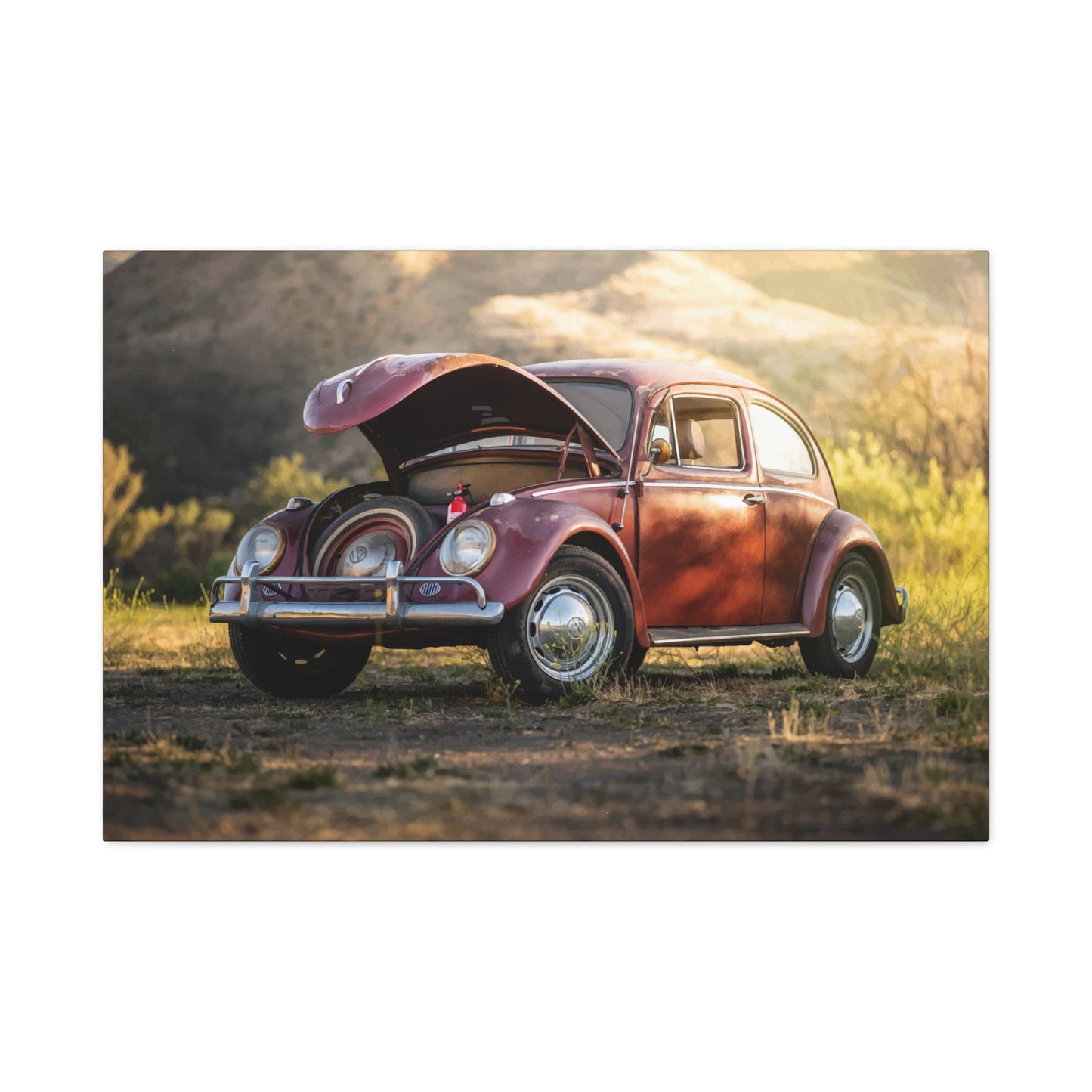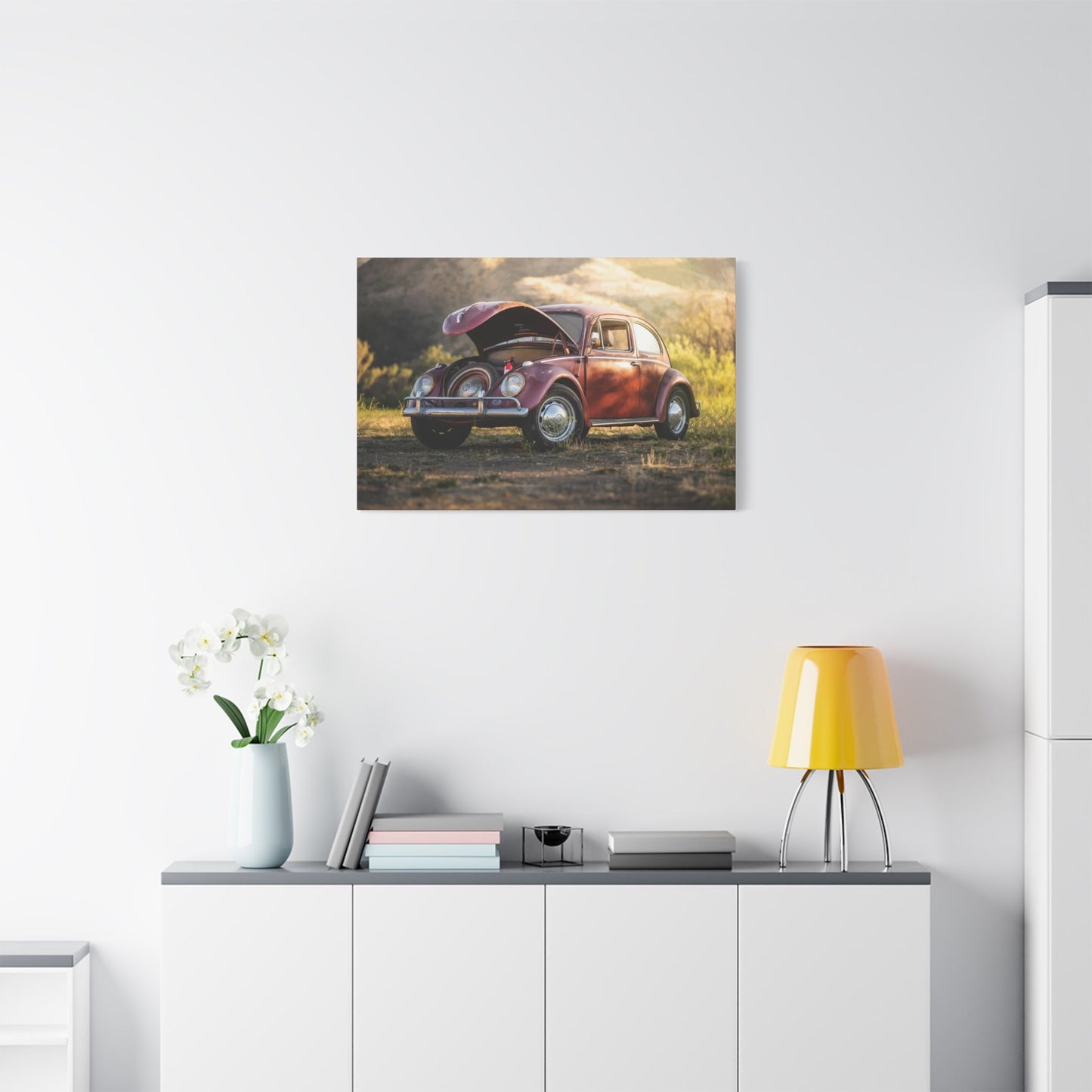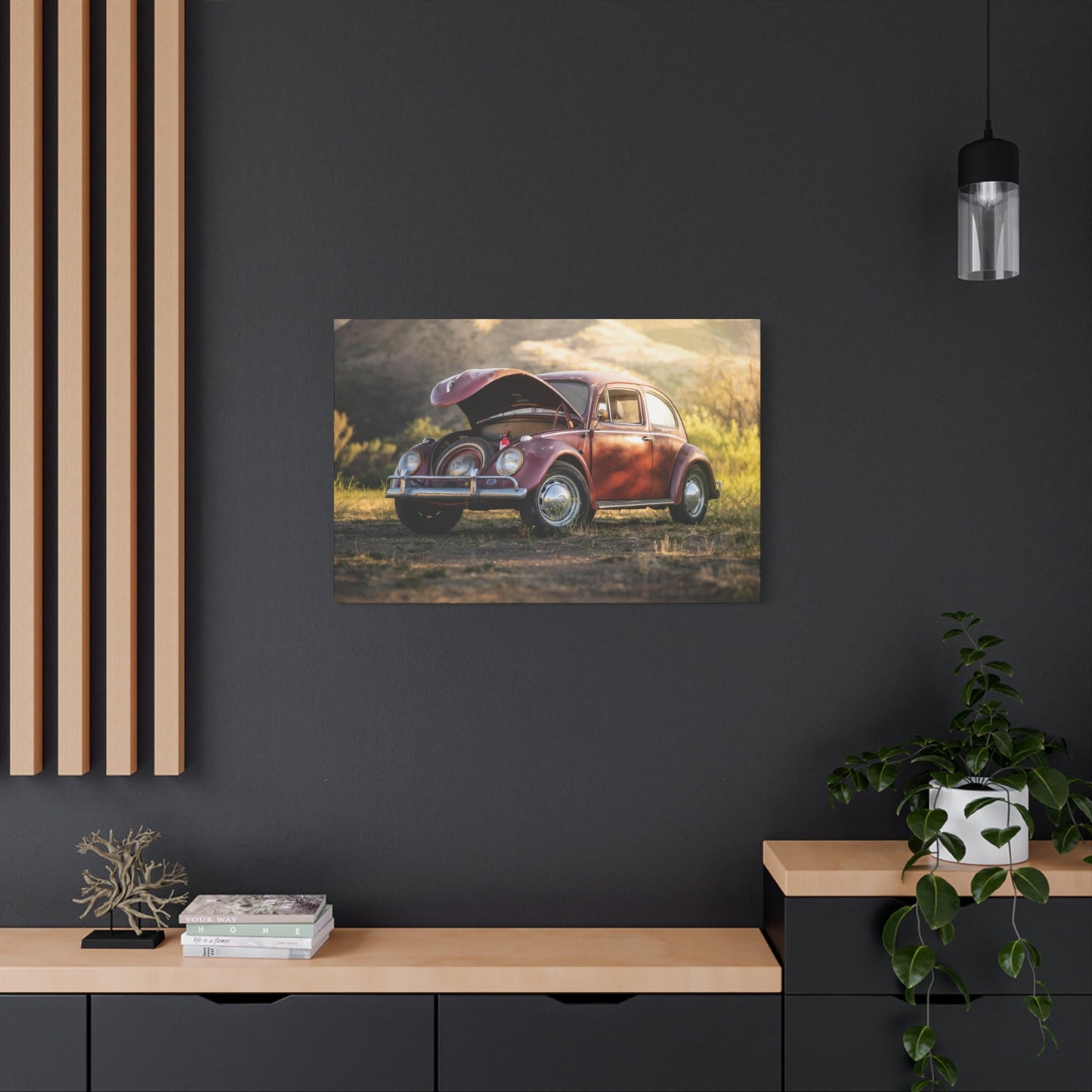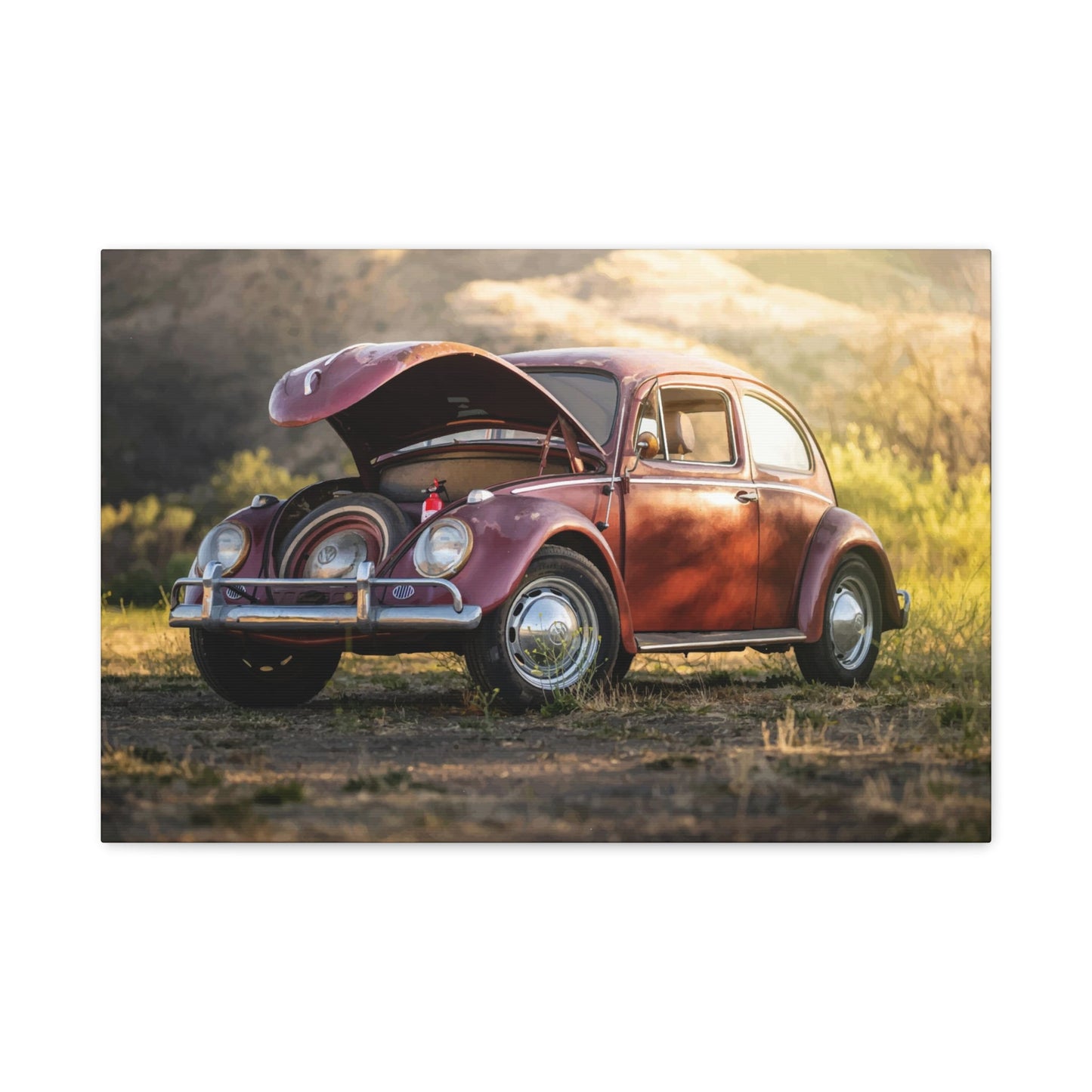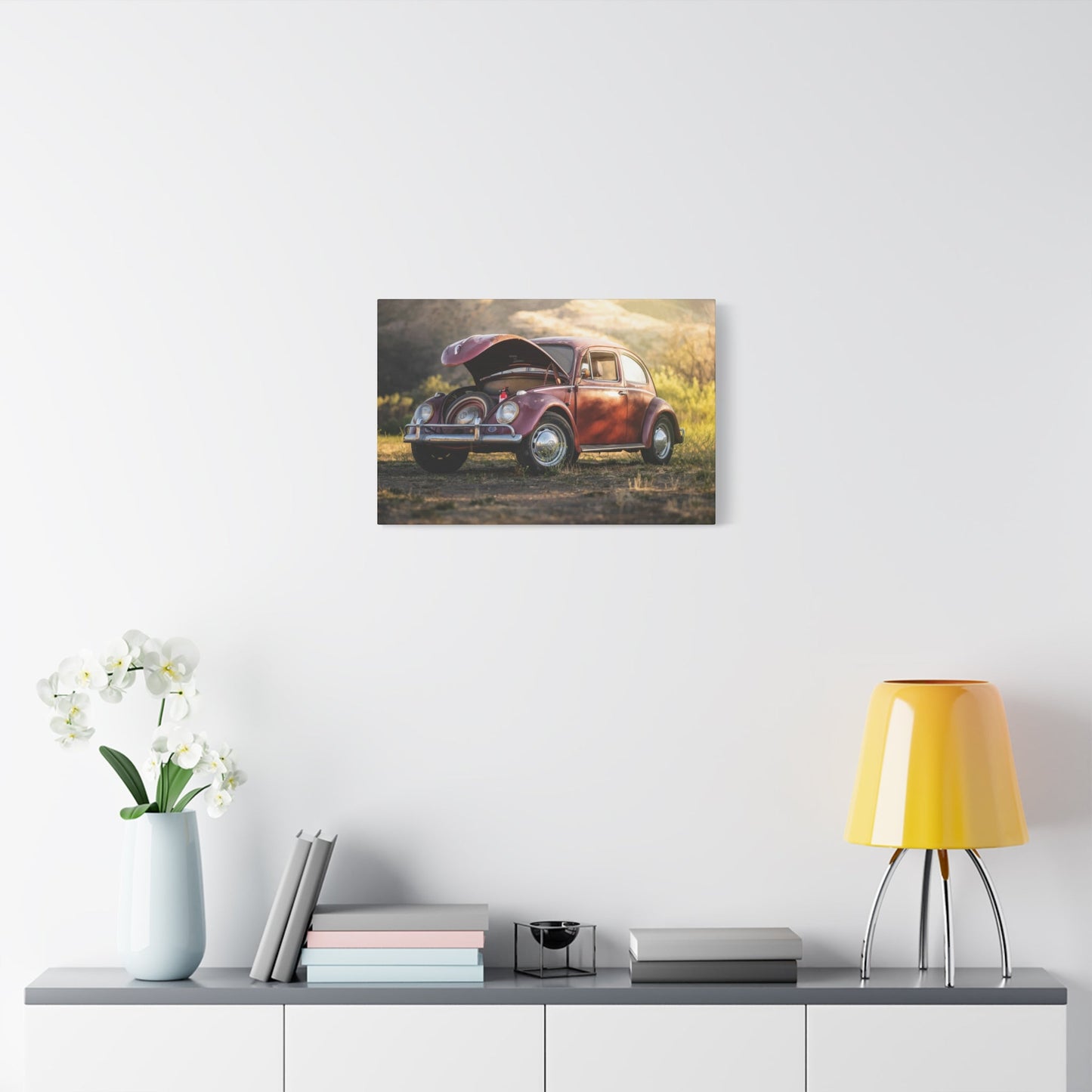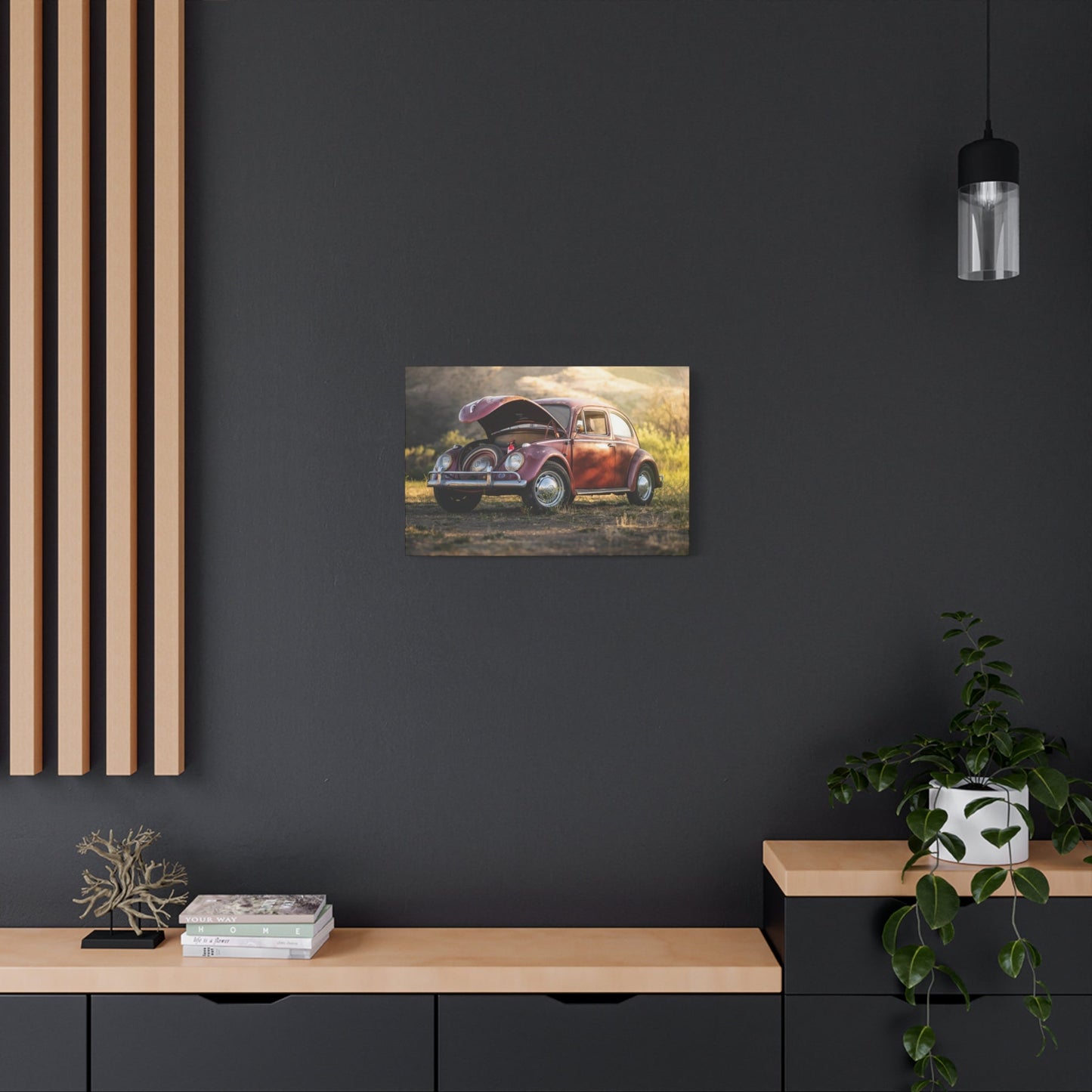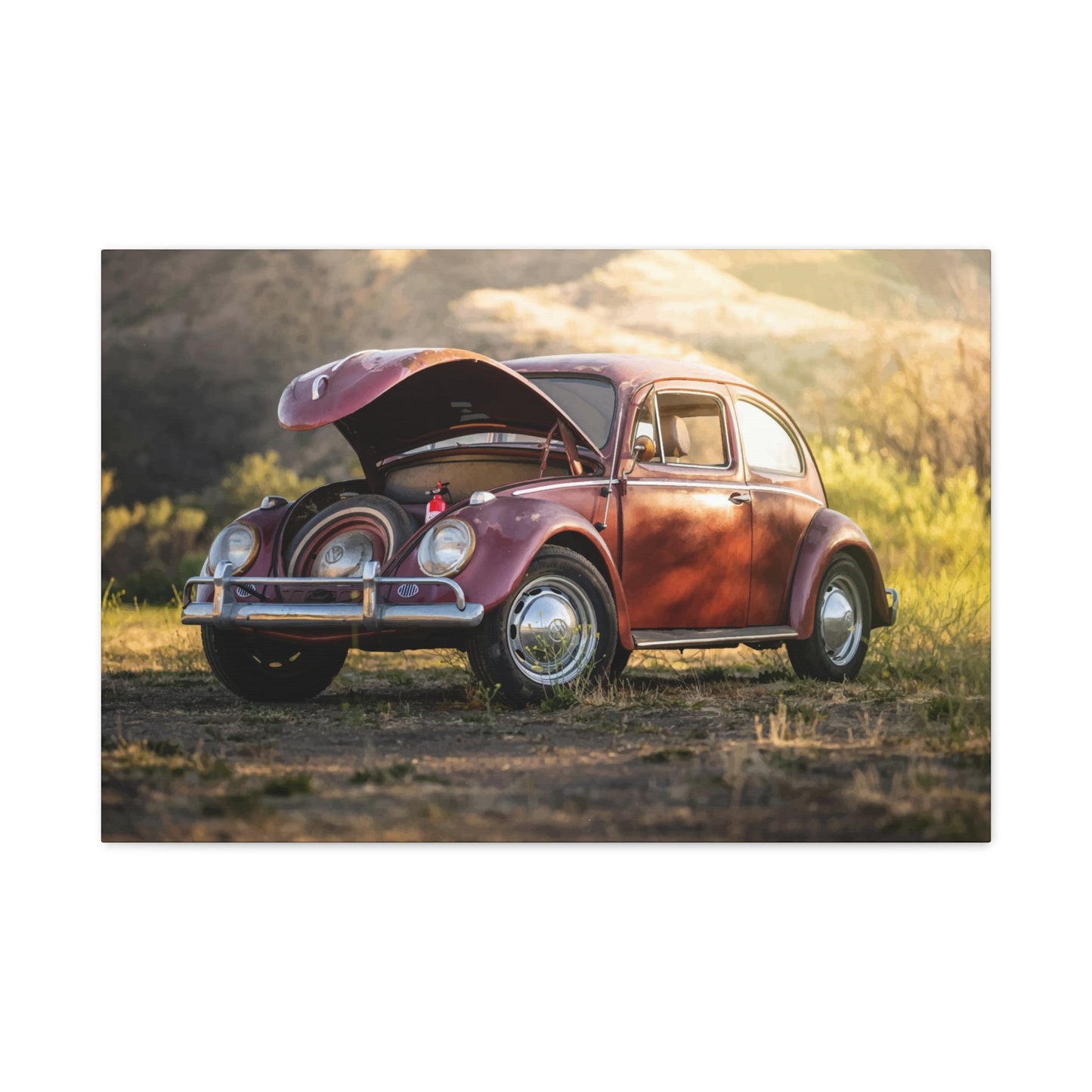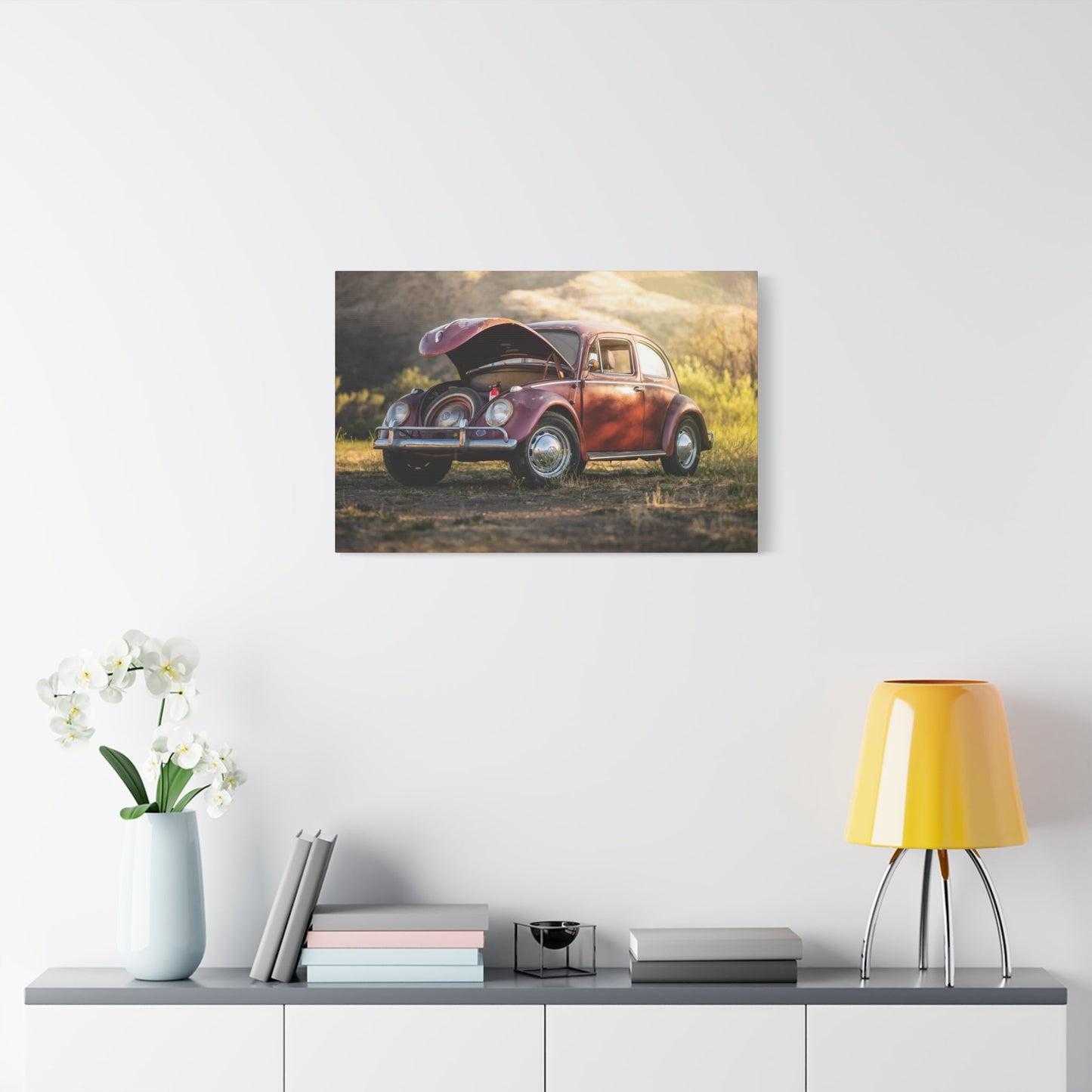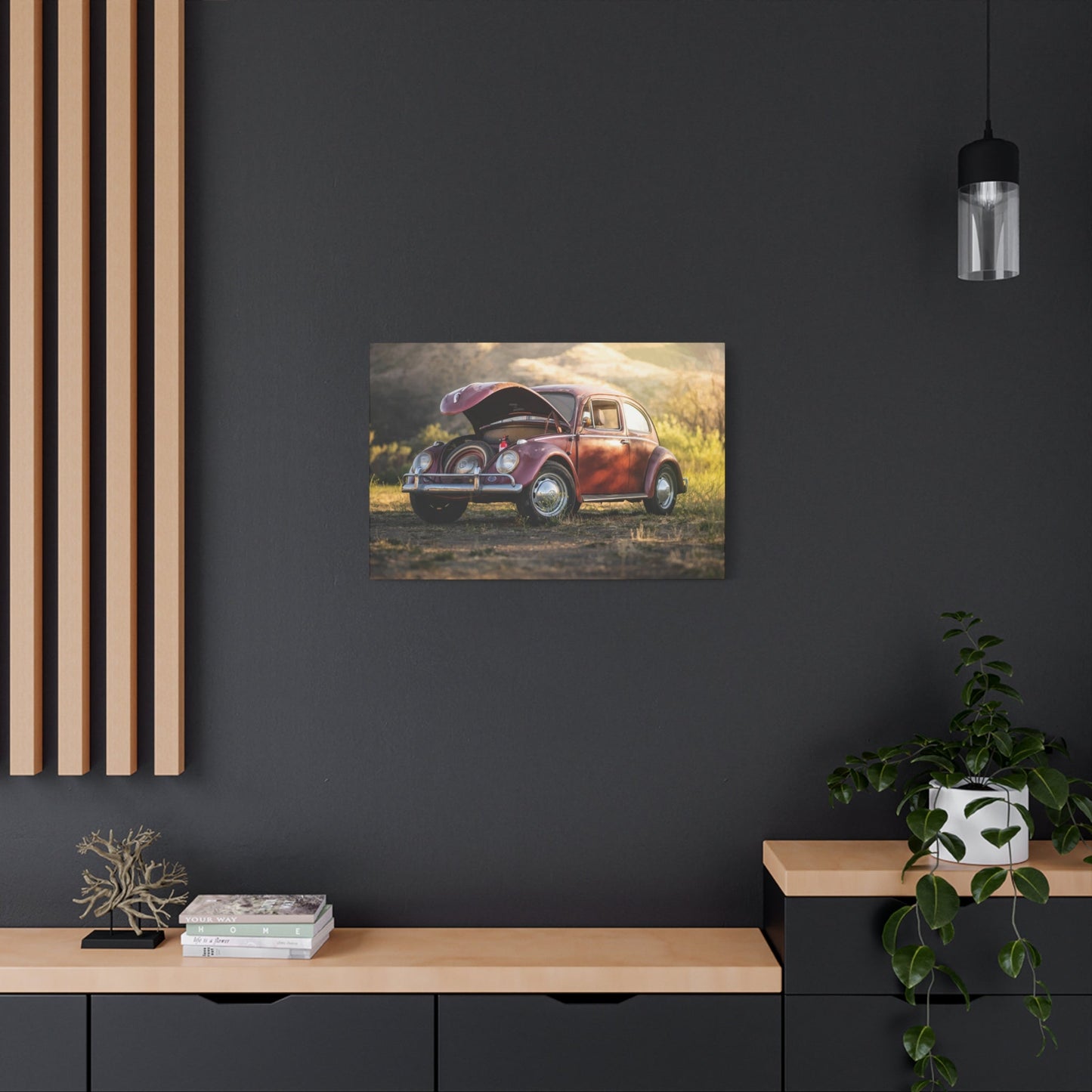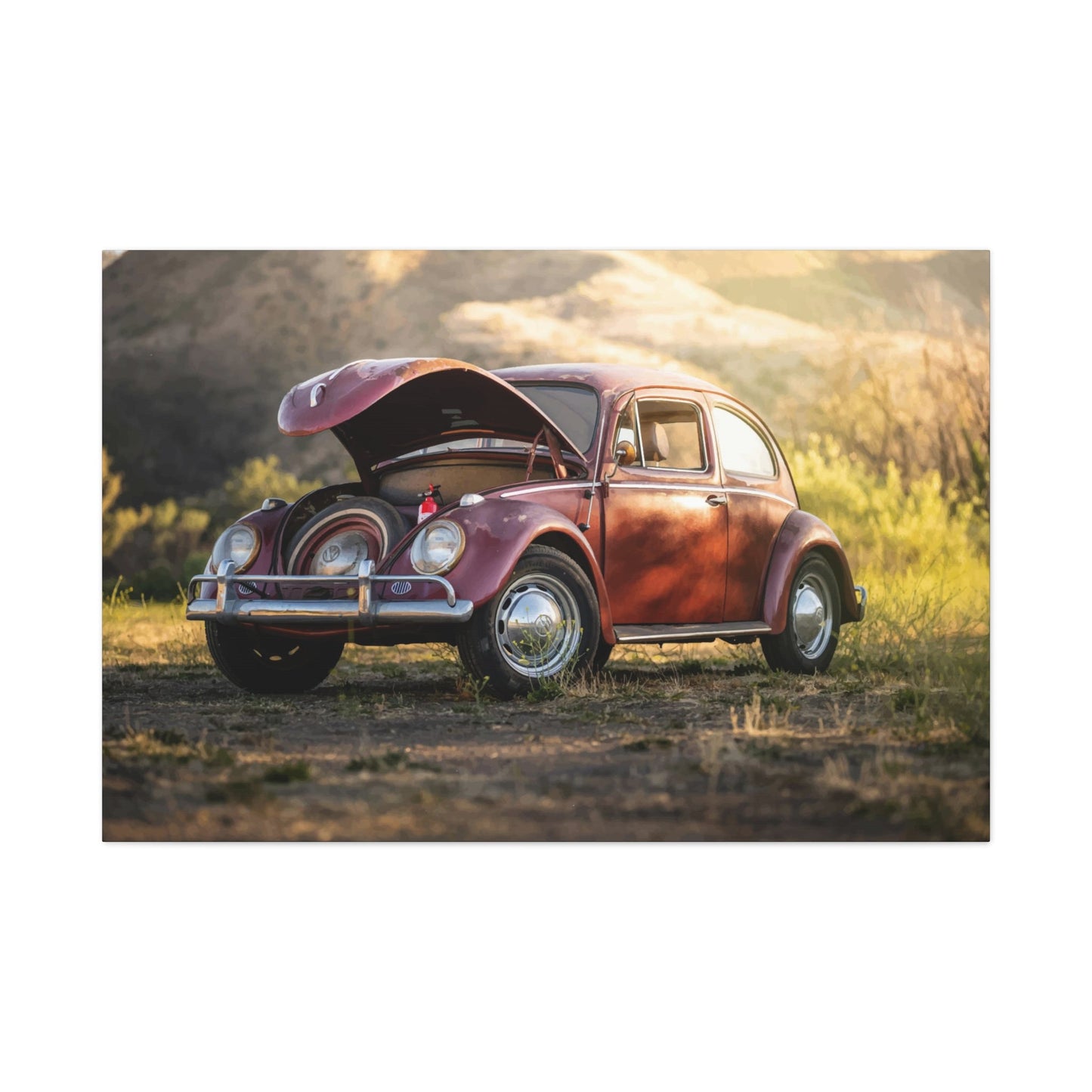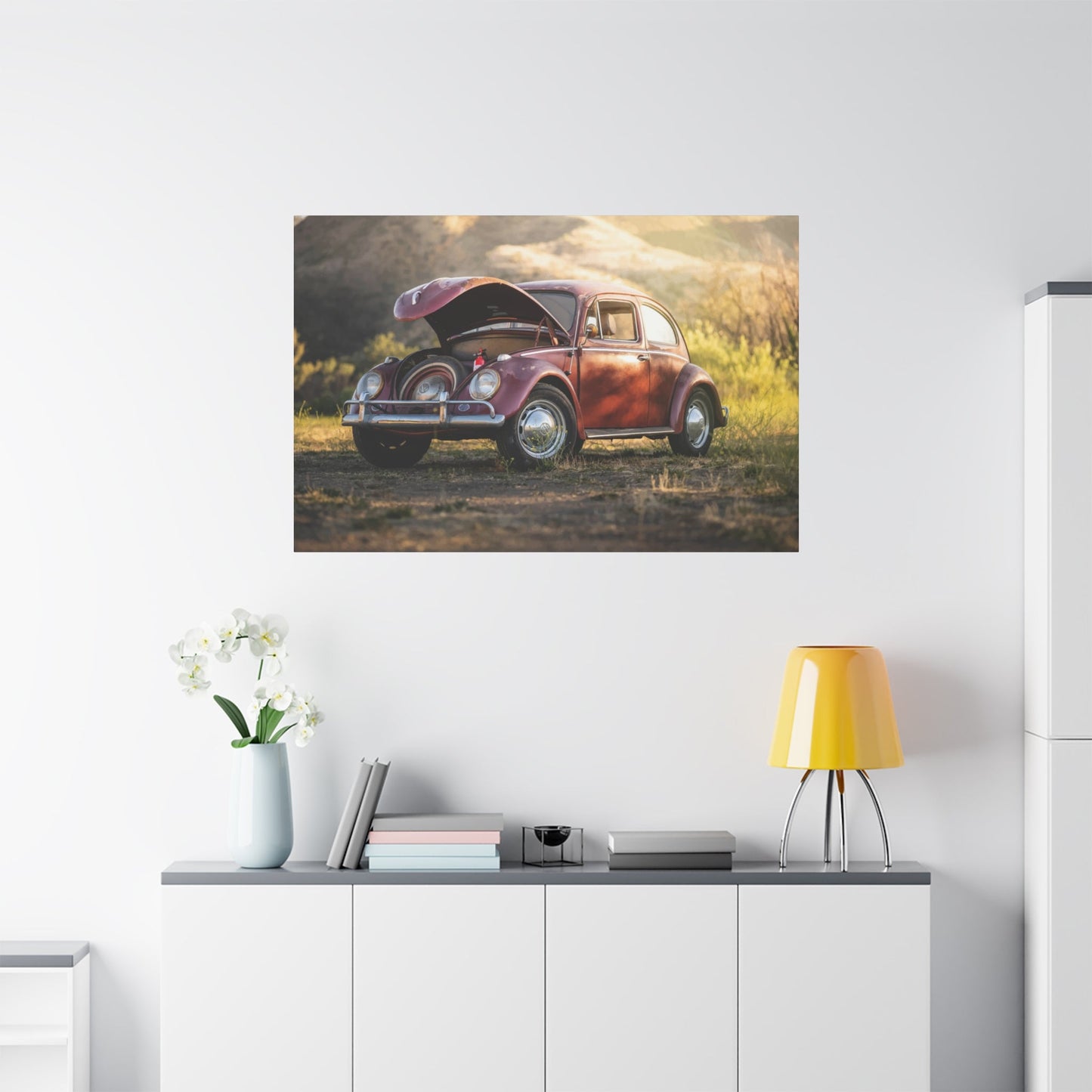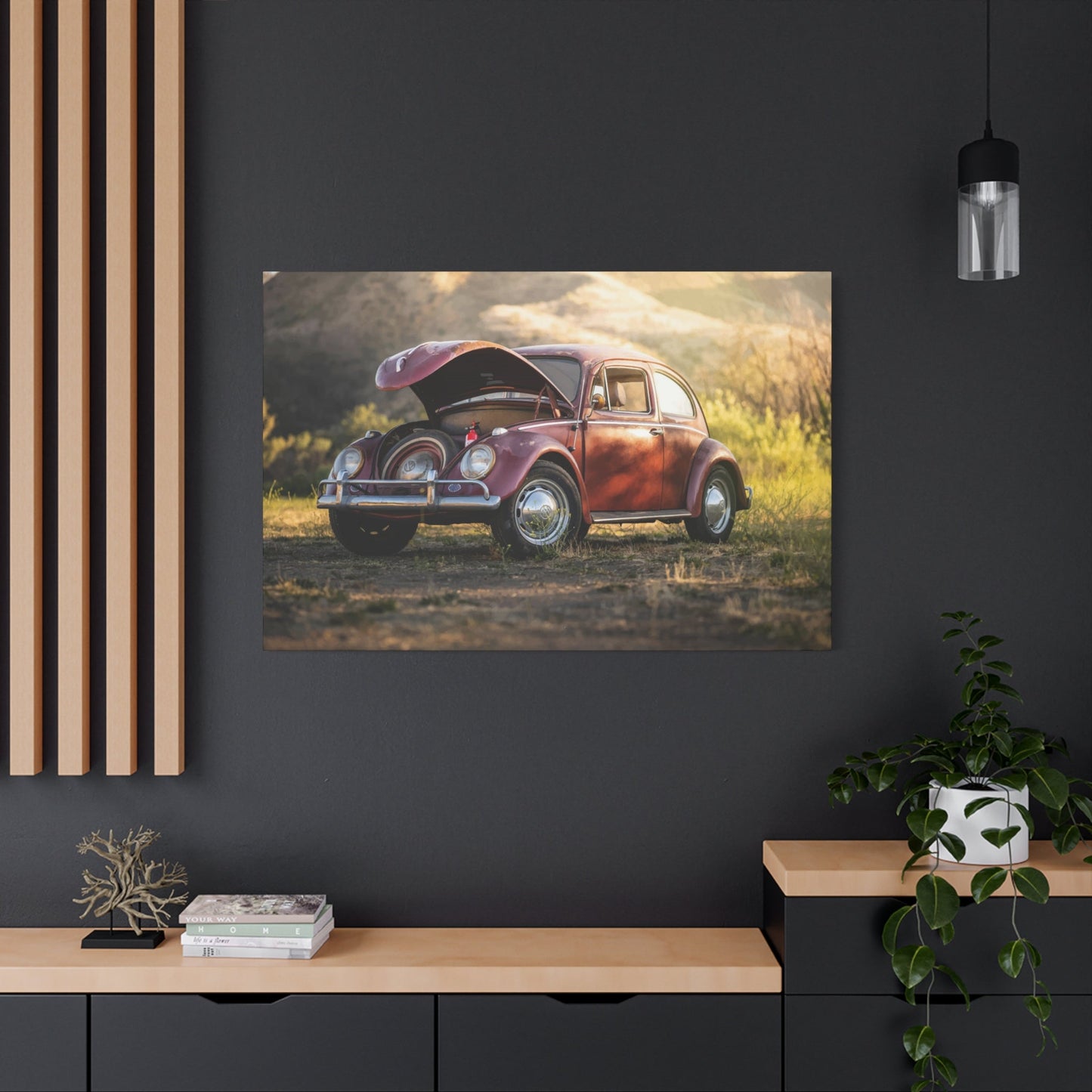Classic Car Canvas Wall Art: Automotive Elegance for Every Space
The allure of vintage automobiles extends far beyond the garage or showroom floor. Classic car wall art has emerged as a sophisticated way to celebrate automotive heritage while adding character and personality to any interior space. These carefully crafted canvas prints capture the essence of motoring history, bringing the romance and excitement of legendary vehicles into homes, offices, and commercial spaces.
The appeal of classic car canvas art lies in its ability to evoke powerful emotions and memories. Whether you're a dedicated car enthusiast or simply appreciate the artistry of automotive design, these pieces serve as conversation starters and focal points that reflect personal passion and style. The timeless nature of classic automobiles translates beautifully to wall art, creating visual narratives that speak to craftsmanship, innovation, and the golden age of automotive engineering.
Modern printing technology has revolutionized the way we can display automotive art in our homes. High-quality canvas prints offer durability, vibrant colors, and textures that rival traditional paintings. The canvas medium provides a sophisticated presentation that elevates the subject matter, transforming simple photographs or illustrations into gallery-worthy pieces that command attention and admiration.
The versatility of classic car wall art makes it suitable for various interior design styles, from industrial lofts to traditional family homes. The key lies in selecting pieces that complement existing decor while adding a distinctive automotive flair that reflects the owner's personality and interests. These artworks serve as bridges between past and present, connecting viewers to an era of automotive excellence and design innovation.
When considering classic car wall art for your space, think beyond mere decoration. These pieces tell stories of human ingenuity, design evolution, and cultural significance. Each vintage automobile captured on canvas represents a moment in time, a technological achievement, or a design philosophy that continues to influence contemporary automotive culture.
The emotional connection people form with classic car imagery often stems from personal experiences, family memories, or aspirational dreams. A canvas print of a 1969 Mustang might remind someone of their first car, while a vintage Porsche 911 could represent a lifelong automotive goal. This personal resonance makes classic car wall art more than simple decoration – it becomes a reflection of identity and aspiration.
Canvas prints offer practical advantages over traditional framed photographs or posters. The material resists fading, doesn't require glass protection, and can be easily cleaned and maintained. This durability makes classic car canvas art an excellent long-term investment for both residential and commercial applications.
The artistry involved in creating compelling classic car wall art extends beyond simple photography. Many pieces incorporate artistic techniques such as selective colorization, dramatic lighting effects, and compositional elements that enhance the visual impact of the automotive subject. These artistic interpretations can transform familiar vehicles into striking visual statements that capture attention and imagination.
Revitalizing Your Garage Space with Automotive Canvas Artwork
The garage represents the natural habitat for automotive enthusiasts, making it the perfect canvas for displaying classic car artwork. Converting a functional space into an inspiring environment requires thoughtful consideration of lighting, positioning, and the overall aesthetic vision you want to achieve.
Garages present unique opportunities for displaying larger-scale canvas prints that might overwhelm other interior spaces. The industrial nature of most garages complements the mechanical beauty of classic automobiles, creating harmonious environments where form follows function. The raw concrete walls and utilitarian fixtures provide neutral backdrops that allow vibrant automotive imagery to take center stage.
Temperature and humidity considerations are crucial when displaying canvas art in garage environments. Modern canvas prints are generally more resilient than traditional paper-based artworks, but proper ventilation and climate control can extend the life of your investment. Consider the positioning of prints relative to heat sources, direct sunlight, and areas prone to moisture accumulation.
The scale of garage spaces allows for creative grouping arrangements that might not be feasible in living areas. Consider creating themed collections that showcase different eras of automotive history, specific manufacturers, or racing heritage. Large-format prints can serve as dramatic focal points, while smaller pieces can fill in details and create comprehensive visual narratives.
Lighting plays a critical role in showcasing classic car canvas art effectively in garage settings. LED strip lighting, track lighting, or strategically placed spotlights can dramatically enhance the visual impact of your automotive artwork while providing functional illumination for garage activities. The interplay between artificial lighting and automotive imagery can create dynamic, gallery-like atmospheres.
Storage considerations become important when displaying valuable canvas art in garage environments. Dust, debris, and chemical exposure from automotive activities require protective measures and regular maintenance routines. Consider the proximity of artwork to work areas, chemical storage, and high-traffic zones when planning your display strategy.
The psychological impact of surrounding yourself with inspiring automotive imagery while working on cars or pursuing automotive hobbies cannot be understated. Classic car wall art serves as motivation, inspiration, and a constant reminder of the passion that drives automotive enthusiasm. These visual connections to automotive history and excellence can enhance the entire garage experience.
Interactive elements can enhance the effectiveness of classic car wall art in garage settings. Consider incorporating display cases for automotive memorabilia, tool collections, or model cars that complement the wall art themes. This multi-dimensional approach creates immersive environments that celebrate automotive culture comprehensively.
The durability requirements for garage-displayed artwork are significantly higher than those for indoor spaces. Canvas prints must withstand temperature fluctuations, humidity changes, and potential exposure to automotive chemicals and dust. High-quality canvas materials and protective coatings become essential investments for long-term display success.
Iconic Automotive Imagery for Interior Design Enhancement
The integration of iconic car imagery into interior design requires a sophisticated understanding of both automotive history and design principles. Classic automobiles represent more than transportation; they embody cultural movements, technological achievements, and artistic expressions that continue to influence contemporary design aesthetics.
The selection of iconic vehicles for wall art display should reflect both personal preferences and broader design considerations. Legendary models such as the Ferrari 250 GTO, Jaguar E-Type, or Porsche 356 carry universal appeal and recognition that transcends automotive enthusiasm. These vehicles represent design excellence that appeals to broader audiences while maintaining automotive authenticity.
Color coordination becomes crucial when incorporating automotive wall art into existing interior design schemes. Classic car imagery often features bold, saturated colors that can either complement or clash with established room palettes. Consider how the reds of a Ferrari, the British Racing Green of a Jaguar, or the silver of a Mercedes-Benz will interact with your existing color scheme.
The architectural context of your space influences the most effective approaches to displaying iconic car art. Mid-century modern homes naturally complement automotive imagery from the same era, while traditional spaces might benefit from more classic or vintage automotive subjects. Contemporary minimalist environments can showcase dramatic, high-contrast automotive imagery as powerful focal points.
Scale relationships between artwork and furniture are critical for achieving balanced, harmonious interior compositions. Large-scale automotive prints can anchor seating arrangements or dining areas, while smaller pieces might work better in transitional spaces or as part of gallery wall arrangements. The visual weight of the automotive subject matter should balance with other room elements.
The storytelling potential of iconic car imagery adds narrative depth to interior spaces. Each classic automobile carries historical significance, technological innovation stories, and cultural context that can spark conversations and create meaningful connections between occupants and their environment. This narrative quality distinguishes automotive art from purely decorative elements.
Professional interior designers increasingly recognize the sophistication and versatility of high-quality automotive wall art. When executed thoughtfully, classic car canvas prints can enhance luxury residential projects, boutique hotels, restaurants, and commercial spaces seeking distinctive character and masculine sophistication.
The emotional responses evoked by iconic automotive imagery can significantly impact the atmosphere and energy of interior spaces. The power, elegance, and freedom associated with classic sports cars can invigorate home offices, inspire creativity in studios, or create relaxing retreats in private spaces. Understanding these psychological impacts helps optimize placement decisions.
Seasonal considerations can influence the effectiveness of automotive wall art displays. The bright, energetic imagery of classic convertibles might feel more appropriate during spring and summer months, while the sophisticated elegance of luxury sedans or coupes could provide comfort during colder seasons. Rotating displays can maintain visual interest throughout the year.
Living Room Statement Walls Featuring Classic Car Artwork
The living room represents the social heart of most homes, making it an ideal location for displaying classic car prints that reflect personality while sparking engaging conversations. Creating statement walls with automotive artwork requires balancing visual impact with overall room harmony and functionality.
Statement walls featuring classic car art can anchor entire room designs, providing focal points around which furniture arrangements and color schemes can be organized. The key lies in selecting automotive imagery that complements rather than competes with other room elements while maintaining sufficient visual presence to command attention and admiration.
The selection of classic car subjects for living room display often benefits from choosing vehicles that represent broader cultural significance rather than purely technical automotive interest. Icons like the Volkswagen Beetle, Ford Mustang, or Chevrolet Camaro carry mainstream recognition and appeal that can engage guests regardless of their automotive knowledge or enthusiasm.
Lighting design becomes particularly important when creating automotive statement walls in living spaces. Natural light from windows can enhance the vibrancy of canvas prints during daylight hours, while carefully positioned artificial lighting can maintain visual impact during evening gatherings. Consider how different lighting conditions will affect the appearance and mood of your automotive artwork throughout the day.
The integration of automotive wall art with entertainment systems and technology requires thoughtful planning to avoid visual conflicts or practical complications. Large-scale classic car prints can provide sophisticated backdrops for mounted televisions, while smaller pieces might complement media consoles or bookshelf arrangements without competing for attention.
Furniture positioning relative to automotive statement walls influences both the visual impact of the artwork and the functionality of the living space. Seating arrangements should allow comfortable viewing of the wall art while maintaining conversation-friendly configurations. The scale of furniture pieces should balance with the automotive imagery to create harmonious proportional relationships.
The versatility of classic car wall art allows for seasonal or periodic updates to maintain visual interest and reflect changing preferences. Canvas prints can be easily repositioned, replaced, or supplemented with additional pieces to create evolving displays that keep living spaces fresh and engaging over time.
Sound considerations become relevant when automotive wall art features vehicles known for distinctive engine notes or exhaust sounds. While canvas prints are visual mediums, the psychological associations with automotive sounds can enhance the overall impact of classic car imagery, creating multisensory connections that deepen the viewing experience.
The social aspects of living room automotive displays should encourage interaction and conversation among family members and guests. Classic car artwork can serve as icebreakers, memory triggers, and educational tools that facilitate meaningful exchanges about automotive history, personal experiences, and shared interests in automotive culture.
Canvas Art Capturing Classic Car Heritage and History
The rich history of automotive development provides endless inspiration for canvas art that celebrates technological innovation, design evolution, and cultural significance. Classic car heritage extends beyond individual vehicles to encompass entire eras of automotive achievement, manufacturing excellence, and societal transformation.
The documentation of automotive history through canvas art serves educational purposes while providing visual entertainment and inspiration. Each classic vehicle represents a specific moment in technological development, from early automotive pioneers to golden age muscle cars to sophisticated European sports cars. These historical narratives add depth and meaning to wall art displays.
The evolution of automotive design philosophies becomes apparent when displaying classic car art chronologically or thematically. Viewers can observe the progression from functional early automobiles to artistic expressions of speed, luxury, and performance. This educational aspect makes classic car canvas art valuable for both personal enjoyment and broader cultural appreciation.
Regional automotive histories offer opportunities for creating geographically or culturally specific wall art collections. American muscle cars, British roadsters, German engineering excellence, Italian exotic cars, and Japanese performance vehicles each represent distinct cultural approaches to automotive development that can be celebrated through carefully curated canvas displays.
The technological innovations captured in classic car imagery tell stories of human ingenuity and engineering advancement. From the introduction of independent suspension to the development of fuel injection systems to the evolution of aerodynamic design, each classic vehicle displayed on canvas represents multiple technological achievements that continue to influence contemporary automotive development.
The social and cultural contexts surrounding classic automobiles add layers of meaning to heritage-focused wall art. The cars of the 1960s reflect optimism and youth culture, while luxury vehicles from earlier eras represent craftsmanship and exclusivity. Understanding these cultural connections enhances the appreciation and impact of classic car canvas art.
Preservation efforts for classic automobiles parallel the preservation of their images through high-quality canvas art. As original vehicles become increasingly rare and valuable, canvas prints serve as accessible ways to celebrate and remember automotive heritage. This preservation aspect adds significance to classic car wall art beyond simple decoration.
The craftsmanship visible in classic automotive design translates beautifully to canvas art presentations. Hand-formed body panels, intricate mechanical details, and carefully proportioned design elements become artistic subjects worthy of gallery-quality display. The intersection of industrial design and artistic expression makes classic car imagery particularly compelling for wall art applications.
Masculine Spaces Enhanced with Automotive Wall Decor
The traditional association between automotive interests and masculine spaces creates natural opportunities for incorporating classic car wall art into man caves, home offices, and recreational areas designed primarily for male occupants. However, the sophisticated presentation of high-quality automotive canvas art can elevate these spaces beyond stereotypical masculine decor themes.
The psychology of masculine spaces often emphasizes themes of achievement, power, craftsmanship, and technological appreciation. Classic car wall art naturally embodies these qualities through its celebration of engineering excellence, design innovation, and performance capability. The key lies in presenting automotive imagery with sophistication rather than simply decorating with automotive memorabilia.
Color palettes in masculine spaces typically favor darker, more saturated tones that complement the bold imagery often found in classic car photography. Deep blues, rich reds, metallic silvers, and classic blacks provide perfect backdrops for automotive wall art while maintaining masculine aesthetic preferences. The interplay between these colors and automotive imagery can create visually striking and emotionally satisfying environments.
The scale and impact requirements for masculine spaces often call for larger, more dramatic automotive wall art presentations. Bold, oversized canvas prints can anchor room designs while providing the visual weight necessary to balance larger furniture pieces and architectural features commonly found in man caves and recreational spaces.
Lighting considerations in masculine spaces benefit from the dramatic possibilities offered by automotive subjects. Track lighting, accent lighting, and directional spotlights can create museum-quality presentations that highlight the sculptural qualities of classic automobile design while providing functional illumination for various activities.
The integration of automotive wall art with other masculine interests creates opportunities for comprehensive themed environments. Classic car imagery can complement displays of tools, sporting memorabilia, whiskey collections, or other hobby-related items to create cohesive spaces that reflect multiple aspects of masculine identity and interest.
The durability requirements for wall art in recreational spaces often exceed those for formal living areas. Canvas prints must withstand higher activity levels, potential exposure to food and beverages, and more casual treatment while maintaining their visual impact and structural integrity over extended periods.
Storage and display flexibility become important considerations in masculine spaces that might serve multiple functions or accommodate changing interests over time. Canvas prints offer advantages in terms of easy repositioning, storage, and rotation compared to more permanent wall treatment options.
Timeless Automotive Design for Contemporary Home Interiors
The integration of classic car imagery into modern home interiors requires a sophisticated understanding of how timeless automotive design can complement contemporary architectural and decorating trends. The sculptural qualities and artistic merit of classic automobiles make them suitable subjects for sophisticated interior design applications.
Contemporary interior design trends increasingly emphasize authenticity, craftsmanship, and meaningful personal expression. Classic car wall art satisfies these requirements by celebrating genuine design excellence, manufacturing craftsmanship, and personal passion. The authenticity of automotive subjects provides substance and meaning often lacking in purely decorative elements.
The minimalist tendencies in contemporary design create opportunities for classic car wall art to serve as carefully selected focal points that provide visual interest without overwhelming clean, uncluttered spaces. Single, large-scale automotive prints can satisfy the contemporary preference for impactful, carefully chosen decorative elements rather than numerous smaller pieces.
The color neutrality available in black and white automotive photography aligns perfectly with contemporary design preferences for sophisticated, timeless color palettes. Monochromatic automotive imagery can provide visual interest and personality while maintaining the clean, uncluttered aesthetic favored in modern interiors.
The industrial design heritage of classic automobiles complements contemporary interior design trends that celebrate industrial materials, exposed structural elements, and honest expression of function. The mechanical beauty of automotive subjects resonates with architectural features like exposed beams, concrete surfaces, and metal fixtures commonly found in contemporary homes.
The technological appreciation inherent in classic car imagery appeals to contemporary sensibilities that value innovation, engineering excellence, and forward-thinking design. Classic automobiles represent historical examples of the technological optimism and design confidence that continue to influence contemporary product design and architectural aesthetics.
The global nature of classic car culture provides opportunities for contemporary interiors to celebrate international design excellence and cultural exchange. Italian sports cars, German engineering, British luxury vehicles, and American muscle cars can represent global design perspectives that enhance cosmopolitan contemporary living environments.
The investment potential of high-quality classic car canvas art aligns with contemporary approaches to interior design that emphasize lasting value and long-term satisfaction over temporary trends. Quality automotive artwork can appreciate in value while providing ongoing visual satisfaction and personal meaning.
Creative Approaches to Vintage Automotive Art Display
The display of vintage car wall art offers numerous creative opportunities that extend beyond traditional hanging and positioning techniques. Innovative presentation methods can enhance the visual impact of automotive imagery while creating unique, personalized environments that reflect individual creativity and style preferences.
Layering techniques can create depth and visual interest in vintage car art displays. Combining different sizes of canvas prints, varying the heights and positions of mounted pieces, and incorporating three-dimensional elements like model cars or automotive accessories can create dynamic, museum-quality presentations that engage viewers from multiple perspectives.
Grouping strategies for vintage automotive art can follow various organizational principles including chronological arrangements, manufacturer groupings, design era classifications, or color coordination schemes. Each approach creates different narrative structures and visual rhythms that can be tailored to specific spaces and personal preferences.
The integration of lighting effects can dramatically enhance vintage car wall art presentations. Backlighting, accent lighting, and color-changing LED systems can create theatrical presentations that highlight specific design features, create mood variations, and add dynamic elements to static imagery. These lighting techniques can transform simple wall displays into engaging artistic installations.
Mixed media approaches can combine vintage car canvas prints with complementary elements such as automotive memorabilia, historical documents, racing programs, or period-appropriate accessories. These multi-dimensional displays create immersive environments that tell comprehensive stories about automotive history and culture.
Interactive display elements can encourage engagement with vintage automotive art beyond passive viewing. QR codes linking to historical information, sound systems playing period-appropriate music or engine sounds, and touch-screen displays providing additional context can transform wall art into educational and entertaining experiences.
Seasonal rotation strategies can maintain visual interest in vintage car art displays while accommodating changing preferences and acquisitions. Developing storage and rotation systems allows for ongoing variety and prevents visual fatigue while maximizing the value of larger collections.
The architectural integration of vintage car art can involve custom framing solutions, built-in display systems, and structural modifications that create seamless relationships between artwork and interior architecture. These approaches can elevate simple wall hangings into sophisticated architectural features that enhance overall design quality.
Classic Car Canvas Prints as Thoughtful Gift Options
The universal appeal of classic automobiles makes high-quality canvas prints excellent gift options for a wide range of recipients, from dedicated car enthusiasts to individuals who simply appreciate fine art and craftsmanship. The personal nature of automotive preferences requires thoughtful consideration when selecting appropriate subjects and presentations.
The versatility of classic car canvas art makes it suitable for various gift-giving occasions including birthdays, holidays, retirement celebrations, graduations, and housewarming events. The timeless nature of automotive subjects ensures lasting appeal and relevance that transcends temporary trends or seasonal preferences.
Personalization opportunities in classic car canvas art can create unique, meaningful gifts that reflect the recipient's specific interests, memories, or aspirations. Custom prints featuring a recipient's actual vehicle, dream car, or historically significant model can create deeply personal gifts that demonstrate thoughtfulness and consideration.
The presentation quality of professional canvas prints elevates classic car imagery to gift-worthy standards that reflect well on the giver's taste and consideration. High-quality materials, professional printing techniques, and sophisticated framing options ensure that automotive gifts are received and appreciated as genuine art rather than simple decoration.
Budget considerations for classic car canvas gifts span a wide range of price points, making automotive art accessible for various gift-giving budgets. From smaller, single prints to elaborate multi-piece collections, classic car canvas art can accommodate different financial constraints while maintaining quality and impact.
The educational value of classic car canvas art can make it particularly appropriate for younger recipients who might benefit from exposure to automotive history, design appreciation, and cultural understanding. Quality automotive art can inspire interest in engineering, design, history, and craftsmanship while providing long-lasting decorative value.
The gender-neutral appeal of sophisticated automotive art makes it suitable for recipients regardless of gender, challenging traditional assumptions about automotive interest and expanding the potential gift recipient pool. High-quality presentation and artistic merit can appeal to aesthetic sensibilities beyond specific automotive enthusiasm.
Storage and shipping considerations for canvas print gifts require attention to protective packaging, size limitations, and delivery logistics. Professional suppliers typically offer appropriate packaging and shipping services that ensure gifts arrive in perfect condition ready for immediate display.
Automotive Art Spanning from Muscle Cars to European Classics
The diversity of classic automotive subjects available for canvas art provides endless opportunities for creating collections that span different eras, regions, and design philosophies. From American muscle cars to European luxury vehicles, each category offers unique aesthetic and cultural perspectives that can enhance various interior environments.
American muscle cars from the 1960s and 1970s represent a specific cultural moment characterized by power, youth rebellion, and optimistic confidence. Canvas prints featuring iconic models like the Dodge Charger, Plymouth 'Cuda, or Chevrolet Chevelle capture the bold, aggressive styling and cultural significance of this uniquely American automotive era.
European sports cars offer sophisticated design aesthetic that emphasizes craftsmanship, engineering precision, and artistic expression. Italian manufacturers like Ferrari and Lamborghini, British brands such as Jaguar and Aston Martin, and German companies including Porsche and Mercedes-Benz each contribute distinct design philosophies that translate beautifully to canvas art presentations.
The evolution of automotive design becomes apparent when displaying diverse classic car subjects together. Viewers can observe the progression from early automotive pioneers to refined luxury vehicles to purpose-built racing machines, creating educational and visually engaging displays that celebrate the breadth of automotive achievement.
Regional preferences and cultural connections often influence the selection of classic car subjects for specific locations or audiences. American muscle cars might resonate more strongly with domestic audiences, while European classics could appeal to individuals with international perspectives or connections to specific European regions or cultures.
The technical specifications and performance capabilities of different classic car categories provide various narrative opportunities for canvas art displays. Drag racing heritage, road racing success, luxury appointments, or innovative engineering features can serve as organizing principles for curated collections that tell specific automotive stories.
Color and design aesthetics vary significantly between different classic car categories, offering opportunities for creating displays that complement various interior design styles. The bold colors and aggressive lines of muscle cars contrast with the refined elegance of European luxury vehicles, allowing for selections that match specific aesthetic preferences.
The investment potential of different classic car subjects can influence collection decisions for individuals who view automotive canvas art as appreciating assets. Iconic vehicles with strong historical significance, limited production numbers, or continuing cultural relevance may offer better long-term value retention and appreciation potential.
Creating Retro-Inspired Interiors with Automotive Wall Art
The integration of classic car wall art into retro-inspired interior design requires understanding the specific design elements, color palettes, and cultural references that define different historical periods. Authentic retro interiors benefit from automotive imagery that accurately reflects the aesthetic sensibilities and cultural contexts of specific eras.
The 1950s aesthetic emphasizes optimism, prosperity, and technological advancement that classic car imagery can perfectly complement. Chrome details, two-tone color schemes, and streamlined designs found in period automobiles align with interior design elements like atomic age furniture, bold geometric patterns, and cheerful color combinations.
The 1960s cultural revolution created distinctive aesthetic preferences that automotive wall art can enhance through appropriate subject selection and presentation. The youth culture, counterculture movement, and technological optimism of the era are reflected in automotive designs that emphasized performance, individuality, and breaking from traditional conventions.
The 1970s represented a transition period in automotive design that offers unique opportunities for retro interior applications. The decade's mix of muscle car heritage, emerging environmental consciousness, and changing cultural priorities created distinctive automotive subjects that can anchor authentic 1970s-inspired interior designs.
Color coordination becomes crucial when integrating automotive wall art into retro-inspired interiors. Period-appropriate color palettes must align between automotive subjects and interior elements to create cohesive, authentic environments. The bold oranges, avocado greens, and harvest golds of 1970s interiors require careful consideration when selecting complementary automotive imagery.
Furniture and accessory coordination can enhance the effectiveness of automotive wall art in retro interiors. Mid-century modern furniture, vintage electronics, period-appropriate lighting fixtures, and authentic accessories create comprehensive environments that support and enhance automotive imagery while maintaining historical accuracy.
The cultural authenticity of retro automotive displays requires attention to historical accuracy and period-appropriate subject selection. Vehicles must genuinely represent the intended era rather than simply appearing vintage, ensuring that automotive wall art contributes to rather than detracts from authentic retro interior environments.
Lighting techniques can enhance the retro appeal of automotive wall art through the use of period-appropriate fixtures and lighting effects. Neon accents, colored lighting, and dramatic shadows can recreate the atmospheric qualities associated with different retro periods while highlighting automotive subjects effectively.
Professional Spaces Enhanced with Classic Car Canvas Art
The integration of classic car canvas art into office environments and professional spaces requires balancing personal expression with workplace appropriateness and professional image considerations. High-quality automotive artwork can enhance professional environments while reflecting individual personality and interests.
Executive office spaces often benefit from sophisticated automotive imagery that conveys success, achievement, and appreciation for excellence. Luxury classic cars, racing heritage subjects, and historically significant vehicles can project professional competence while personalizing otherwise sterile business environments.
The psychological impact of inspiring automotive imagery in work environments can enhance creativity, motivation, and job satisfaction. Classic car wall art can serve as visual reminders of personal goals, achievements, and interests that provide emotional support during challenging professional situations.
Client-facing professional spaces require automotive wall art that appeals to broad audiences while maintaining professional appropriateness. Universally recognized classic vehicles with broad cultural appeal can serve as conversation starters and relationship-building tools without alienating potential clients or business partners.
The durability and maintenance requirements for professional space artwork often exceed those for residential applications. High-traffic areas, varying lighting conditions, and extended daily exposure require canvas prints that can maintain their appearance and structural integrity under demanding conditions.
Industry-specific considerations can influence the selection of appropriate automotive subjects for different professional environments. Automotive industry offices might naturally accommodate extensive classic car displays, while financial services or healthcare environments might require more subtle automotive references that complement rather than dominate professional atmospheres.
The scale and positioning of automotive wall art in professional spaces must balance visual impact with workspace functionality. Large-scale prints can anchor conference rooms or reception areas, while smaller pieces might be more appropriate for individual offices or transitional spaces within professional environments.
Budget considerations for professional automotive art often involve different criteria than residential purchases. The investment must be justified through enhanced professional image, improved workplace satisfaction, and potential business development benefits rather than purely personal aesthetic preferences.
Iconic Vehicles as Interior Focal Points
The selection of truly iconic classic vehicles for wall art display requires understanding which automobiles have achieved lasting cultural significance that transcends automotive enthusiasm. These legendary vehicles carry universal recognition and appeal that can serve as powerful focal points in various interior environments.
The Ferrari 250 GTO represents the pinnacle of automotive collecting and racing heritage, making it an ideal subject for sophisticated interior applications. Its combination of Italian design excellence, racing success, and extreme rarity creates powerful visual and emotional impacts that can anchor entire room designs while projecting sophistication and achievement.
The Jaguar E-Type's status as possibly the most beautiful car ever made provides opportunities for artistic presentations that emphasize sculptural qualities and design excellence. The vehicle's elegant proportions and distinctive styling elements translate beautifully to canvas presentations that can enhance both traditional and contemporary interior environments.
The Ford GT40's racing heritage and American engineering excellence make it compelling subject matter for automotive wall art that celebrates achievement, competition, and technological innovation. The vehicle's distinctive design and historical significance can provide inspiration and motivation while serving as visually striking decorative elements.
The Porsche 911's evolutionary design story offers opportunities for creating comprehensive displays that showcase automotive development over multiple decades. The vehicle's consistent design language and continuous improvement philosophy can illustrate themes of persistence, refinement, and engineering excellence through carefully curated canvas presentations.
The Chevrolet Corvette's status as America's sports car provides opportunities for patriotic and cultural presentations that celebrate domestic automotive achievement. Different generations of Corvette design can represent various eras of American automotive history while providing visually striking subjects for wall art applications.
The Mercedes-Benz 300SL Gullwing's innovative engineering and distinctive design features make it ideal for presentations that emphasize technological achievement and design innovation. The vehicle's unique door configuration and racing heritage provide dramatic visual elements that can create memorable focal points in sophisticated interiors.
The Aston Martin DB5's association with popular culture and luxury lifestyle makes it suitable for presentations that emphasize sophistication, exclusivity, and refined taste. The vehicle's elegant design and cultural significance can enhance upscale interior environments while providing engaging conversation topics.
Automotive Enthusiasm Reflected in Wall Art Selection
The translation of genuine automotive passion into appropriate wall art selections requires understanding the specific aspects of automotive culture that resonate most strongly with individual enthusiasts. Different automotive interests call for different approaches to canvas art curation and display.
Racing enthusiasts often gravitate toward automotive wall art that captures the excitement, competition, and technical excellence associated with motorsports. Images featuring race-prepared vehicles, historic racing circuits, or championship-winning cars can satisfy the competitive spirit while providing visual excitement that enhances various interior environments.
Restoration enthusiasts typically appreciate automotive wall art that showcases original condition classic vehicles or documents the transformation process from barn find to concours condition. Before and after imagery, detailed shots of restored components, or pictures celebrating completed restoration projects can appeal to individuals involved in hands-on automotive preservation activities.
Engineering enthusiasts often prefer automotive wall art that highlights technical innovation, mechanical beauty, and design excellence. Cutaway illustrations, detailed engine bay photography, or images that showcase innovative engineering solutions can satisfy intellectual curiosity while providing educational value beyond simple decoration.
Collecting enthusiasts frequently seek automotive wall art that complements their actual vehicle collections or represents aspirational acquisition goals. Images of vehicles they own, previously owned, or hope to acquire can create personal connections that enhance the emotional value of wall art displays beyond aesthetic considerations.
Brand loyalty among automotive enthusiasts creates opportunities for manufacturer-specific wall art collections that celebrate particular marques or design philosophies. Ferrari enthusiasts might create comprehensive displays showcasing different models and eras, while Porsche aficionados could focus on 911 evolution or racing heritage subjects.
The social aspects of automotive enthusiasm can influence wall art selections that facilitate sharing interests with like-minded individuals. Displays that tell automotive stories, celebrate shared experiences, or represent common interests can serve as foundations for enthusiast gatherings and community building activities.
Geographic automotive preferences often reflect regional automotive culture, local racing history, or manufacturing heritage. American muscle car displays might resonate more strongly in Detroit, while European sports car imagery could appeal more broadly to international urban environments.
Creating Automotive Corridors with Classic Car Artwork
Hallways and transitional spaces offer unique opportunities for creating automotive-themed corridors that guide movement through interior environments while celebrating automotive history and culture. These linear spaces can accommodate sequential displays that tell automotive stories or showcase evolution over time.
The linear nature of hallways naturally accommodates chronological arrangements that can illustrate automotive development, manufacturer evolution, or design progression over decades. Viewers can experience automotive history as they move through these spaces, creating educational and entertaining experiences that enhance routine movement through interior environments.
Lighting considerations for hallway automotive displays require balancing functional circulation needs with aesthetic presentation requirements. Track lighting, recessed fixtures, or LED strip systems can provide both wayfinding illumination and accent lighting that highlights automotive artwork effectively throughout the corridor length.
The scale requirements for hallway automotive displays often call for smaller, more numerous pieces rather than large-scale focal point presentations. Series of related images, grouped collections, or themed arrangements can create visual rhythm and continuity that enhances the corridor experience while maintaining appropriate proportional relationships.
Traffic flow considerations must balance the desire to encourage automotive art appreciation with the need to maintain efficient circulation through transitional spaces. Artwork positioning should not impede movement while still providing opportunities for viewing and appreciation during normal passage through the corridor.
The acoustic properties of hallway spaces can enhance automotive wall art through the addition of appropriate sound elements. Subtle engine sounds, period music, or audio narration can create immersive experiences that complement visual imagery while adding multisensory dimensions to automotive corridor displays.
Storage and maintenance accessibility becomes important in hallway automotive displays due to the typically narrow nature of these spaces and the frequency of passage. Canvas prints must be securely mounted and positioned to avoid damage while remaining accessible for cleaning and maintenance activities.
The connection between corridor automotive displays and adjacent spaces requires coordination to ensure visual continuity and thematic consistency. Hallway automotive art should complement rather than compete with artwork and decor in connected rooms while maintaining its own distinct identity and impact.
Harmonizing Modern and Vintage Through Automotive Art
The successful integration of vintage automotive imagery into contemporary interior environments requires sophisticated balancing techniques that respect both historical authenticity and modern design sensibilities. This harmony can create unique, personally meaningful spaces that bridge past and present effectively.
Contemporary interior design principles emphasizing clean lines, minimal ornamentation, and functional beauty can be enhanced rather than compromised by carefully selected vintage automotive imagery. The sculptural qualities and honest expression of function found in classic car design align naturally with modern aesthetic preferences.
Color palette coordination becomes crucial when harmonizing vintage automotive subjects with contemporary interior elements. Black and white automotive photography can provide timeless neutrality that complements modern color schemes, while selective color treatments can highlight specific design elements without overwhelming contemporary aesthetic preferences.
The material honesty celebrated in contemporary design finds natural expression in vintage automotive subjects that showcase genuine craftsmanship, quality materials, and functional beauty. Chrome details, leather interiors, and hand-formed body panels represent authentic material expression that resonates with contemporary appreciation for craftsmanship.
Scale relationships between vintage automotive artwork and contemporary furniture require careful consideration to achieve balanced compositions. Oversized contemporary furniture pieces can accommodate large-scale automotive prints, while smaller modern pieces might work better with more intimate automotive imagery that maintains proportional harmony.
The technological appreciation inherent in contemporary culture can embrace vintage automotive subjects as historical examples of innovation, engineering excellence, and forward-thinking design. Classic cars represent past expressions of the technological optimism that continues to drive contemporary product development and aesthetic preferences.
Lighting design opportunities can enhance the harmony between vintage automotive subjects and contemporary interiors through the use of modern lighting technologies to showcase historical subjects. LED systems, smart lighting controls, and programmable effects can create dynamic presentations that feel both historical and contemporary.
The global perspective common in contemporary interior design can be enhanced by vintage automotive subjects that represent international design excellence and cultural exchange. Italian styling, German engineering, British craftsmanship, and American innovation can contribute to cosmopolitan interior environments that celebrate diverse cultural achievements.
Curating Personal Automotive Art Collections
The development of meaningful classic car wall art collections requires systematic approaches that balance personal preferences with aesthetic considerations, spatial limitations, and long-term satisfaction goals. Successful curation creates cohesive displays that grow and evolve while maintaining thematic integrity and visual impact.
The foundation of automotive art collection development often begins with identifying personal connections to specific vehicles, eras, or automotive themes. These emotional connections provide authenticity and meaning that distinguish personal collections from randomly assembled decorative elements, creating displays that genuinely reflect individual personality and interests.
Budget planning for automotive art collections should consider both immediate acquisition costs and long-term expansion goals. Quality canvas prints represent investments that can appreciate over time while providing ongoing aesthetic satisfaction, making them worthy of careful financial planning and gradual acquisition strategies rather than hasty purchasing decisions.
Theme development can organize automotive art collections around various concepts including manufacturer focus, historical periods, design movements, racing heritage, or personal automotive history. Clear thematic direction helps guide acquisition decisions while creating coherent displays that tell specific stories or celebrate particular aspects of automotive culture.
Quality standards become crucial when building automotive art collections intended for long-term satisfaction and potential appreciation. Professional printing techniques, archival materials, and proper presentation methods ensure that collections maintain their appearance and value over extended periods while justifying the investment in quality pieces.
Conclusion
Classic car canvas wall art offers a striking way to bring the elegance, history, and timeless appeal of vintage automobiles into interior spaces. By capturing the sleek lines, polished chrome, and distinctive character of classic cars, these artworks transform walls into dynamic focal points that celebrate design, craftsmanship, and the spirit of automotive innovation. Whether displayed in living rooms, offices, garages, or entertainment spaces, classic car canvas art elevates interiors with a sense of sophistication, nostalgia, and visual energy, appealing to car enthusiasts and design lovers alike.
The allure of classic car wall art lies in its ability to combine realism with artistic interpretation. Artists and photographers meticulously study the curves, textures, and details of each vehicle, rendering them in a way that highlights their elegance and individuality. From the gleaming finishes and intricate grills to the iconic silhouettes of legendary models, each piece captures the essence of automotive artistry. Paired with thoughtful composition, lighting, and perspective, these canvases create immersive experiences that draw viewers in, evoking admiration for both the cars and the artistry behind the artwork.
Beyond aesthetics, classic car wall art carries symbolic meaning. Vintage automobiles represent innovation, freedom, and timeless style—qualities that resonate in interior spaces designed to inspire and energize. Incorporating these artworks adds a narrative element to a room, allowing residents and visitors to connect with the history and legacy of automotive design while also appreciating the interplay of form, function, and beauty. Each canvas tells a story of speed, elegance, and enduring craftsmanship, enriching interiors with depth and character.
From a design perspective, classic car canvas art is versatile and adaptable. Large-format pieces can serve as dramatic statement works in living rooms, offices, or lounges, while smaller prints or framed canvases provide refined accents for hallways, libraries, or dens. The color palettes, metallic highlights, and sleek lines integrate seamlessly with modern, industrial, and eclectic interiors, ensuring cohesion while enhancing visual interest and personality.
Ultimately, classic car canvas wall art is more than decoration—it is a celebration of design, history, and automotive elegance. By incorporating these masterpieces into home or office interiors, individuals can transform walls into spaces that inspire, captivate, and honor the artistry of classic automobiles. Each piece becomes a bold, sophisticated statement that elevates the character, style, and energy of any environment.

